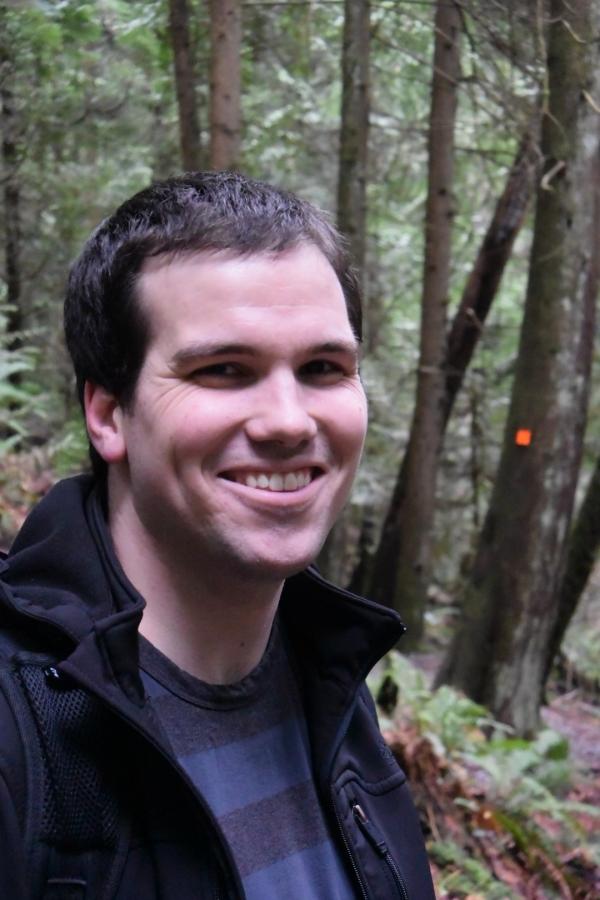Learn more about our current and past interns and their experiences with BRITE.
Watch Philippe Fernandez present on his 2016 Internship with Operation Wallacea: Click Here
2025 Interns
Yu-Heng Lin, City of Surrey

Title: Strengthening Biodiversity Monitoring through Community Science and Spatial Integration in the City of Surrey
About: As part of Surrey’s ongoing effort to implement its Biodiversity Conservation Strategy, I contributed to transforming a growing volume of community science data—such as iNaturalist and eBird observations—into accurate, actionable insights for conservation planning and policy development. Since 2019, Surrey has invested in growing a robust community science program using the iNaturalist.ca and eBird platforms to assist in compiling and mapping species occurrence data and associated attribute information. With nearly 80,000 observations collected to date, my project supports the implementation of the City's Biodiversity Conservation Strategy through a multi-step process. First, I conducted fieldwork to collect flora and fauna observations across several parks in Surrey. Next, I curated and validated species occurrence data submitted by the public through iNaturalist, ensuring the accuracy and usability of this valuable community science resource. Finally, I integrated the refined data into the City’s mapping system to help evaluate the effectiveness of conservation efforts. This project plays a vital role in establishing reliable biodiversity indicators and contributes directly to the City’s ability to monitor trends, inform land-use planning, and communicate progress to both the public and decision makers.
Nicola Love, Government of the Northwest Territories (GNWT)
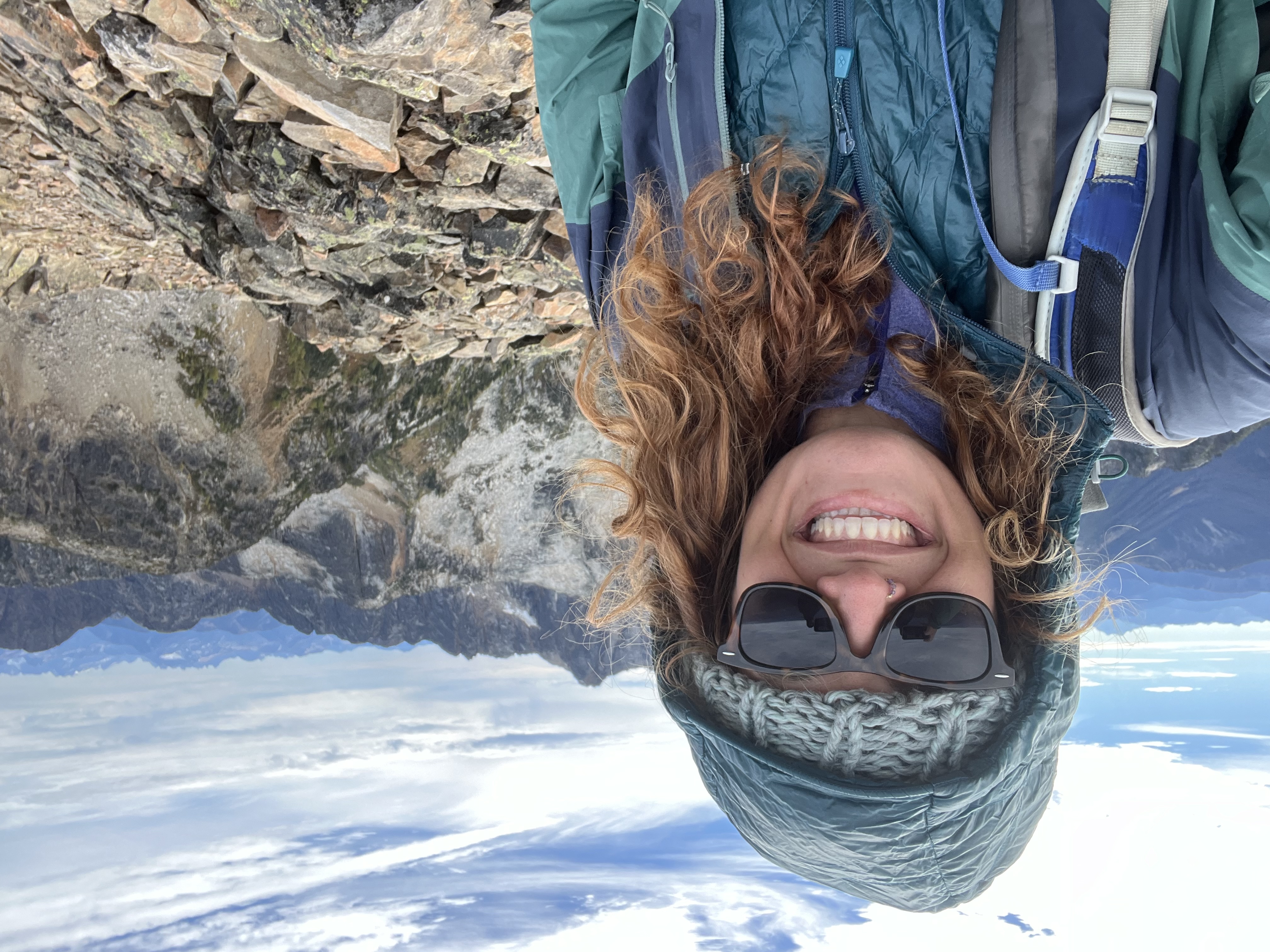
Title: Bridging Science and Wildlife Management: Investigating Wolf-Caribou Dynamics in Northern Canada
About: Through this internship with the Government of the Northwest Territories (GNWT), I will contribute to a comprehensive review of a collaborative wolf management program led by GNWT and the Tłı̨chǫ Government. This initiative, aimed at supporting the recovery of the declining Bathurst and Bluenose-East caribou herds, brought together researchers, Indigenous governments, local harvesters, and wildlife managers. My role will focus on analyzing wolf and caribou movement data to evaluate predator-prey dynamics and the effectiveness of management strategies. Working closely with government biologists, I will contribute to a scientific monograph that will guide future caribou conservation efforts. This experience offers a unique opportunity to integrate research into policy and gain valuable insight into collaborative wildlife management at the territorial level.
Aaron Skinner, The Nature Conservancy
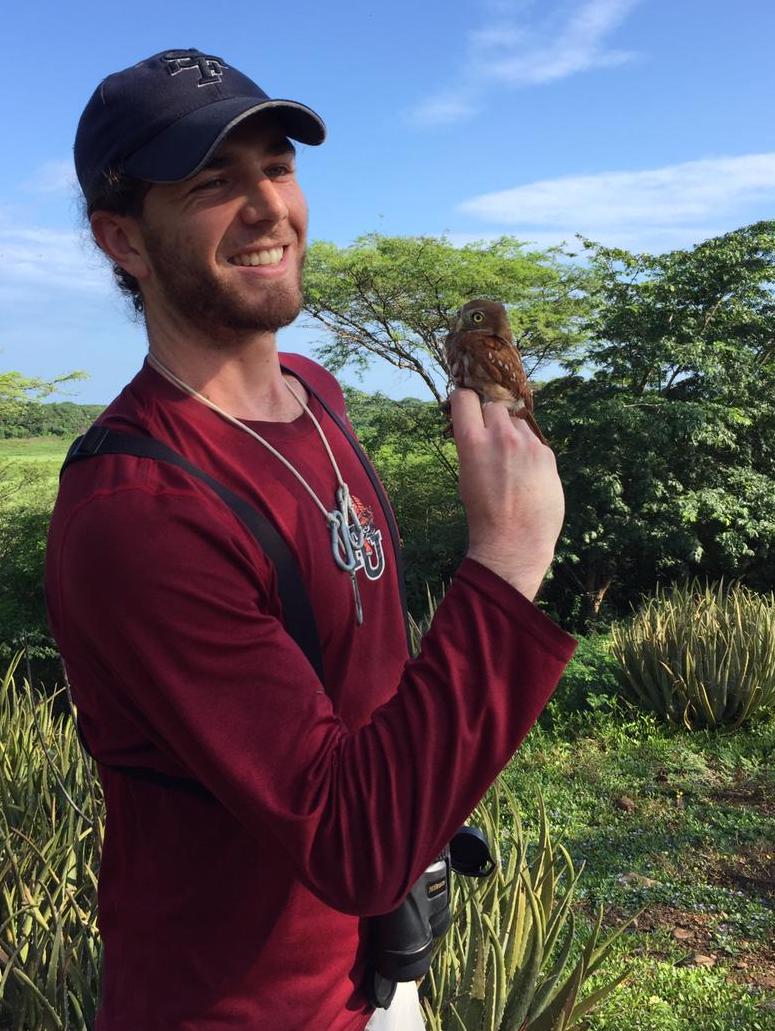
Title: Standardization and documentation of a key biodiversity database from the Sustainable Cattle Ranching project
About: The Sustainable Cattle Ranching (SCR) project (2013–2019) was designed to understand how silvopasture influences landscape connectivity and species’ permanence in the face of extensive land use change in Colombia. The bird dataset is the most comprehensive biodiversity resource from the project, with 500 unique point count locations and nearly 2,700 surveys, where researchers documented 24,000 individuals of 572 species across 5 distinct ecoregions. However, the dataset’s complexity – multiple collectors, varied methodologies, and evolving objectives throughout the project – requires careful cleaning, standardization and documentation. Thus, in collaboration with The Nature Conservancy (TNC), I will lead the publication of a data paper from these data.
Through standardization and documentation of the dataset, this work will enhance its usability for TNC researchers, partners, and external conservation practitioners. This dataset is important, as Latin America faces rapid habitat loss due to agricultural expansion, making it critical to understand how agroforestry systems support biodiversity. A well-documented dataset will enable rigorous analyses that inform conservation policy and land management strategies.
Mia Waters, Future Forest Ecosystems Centre
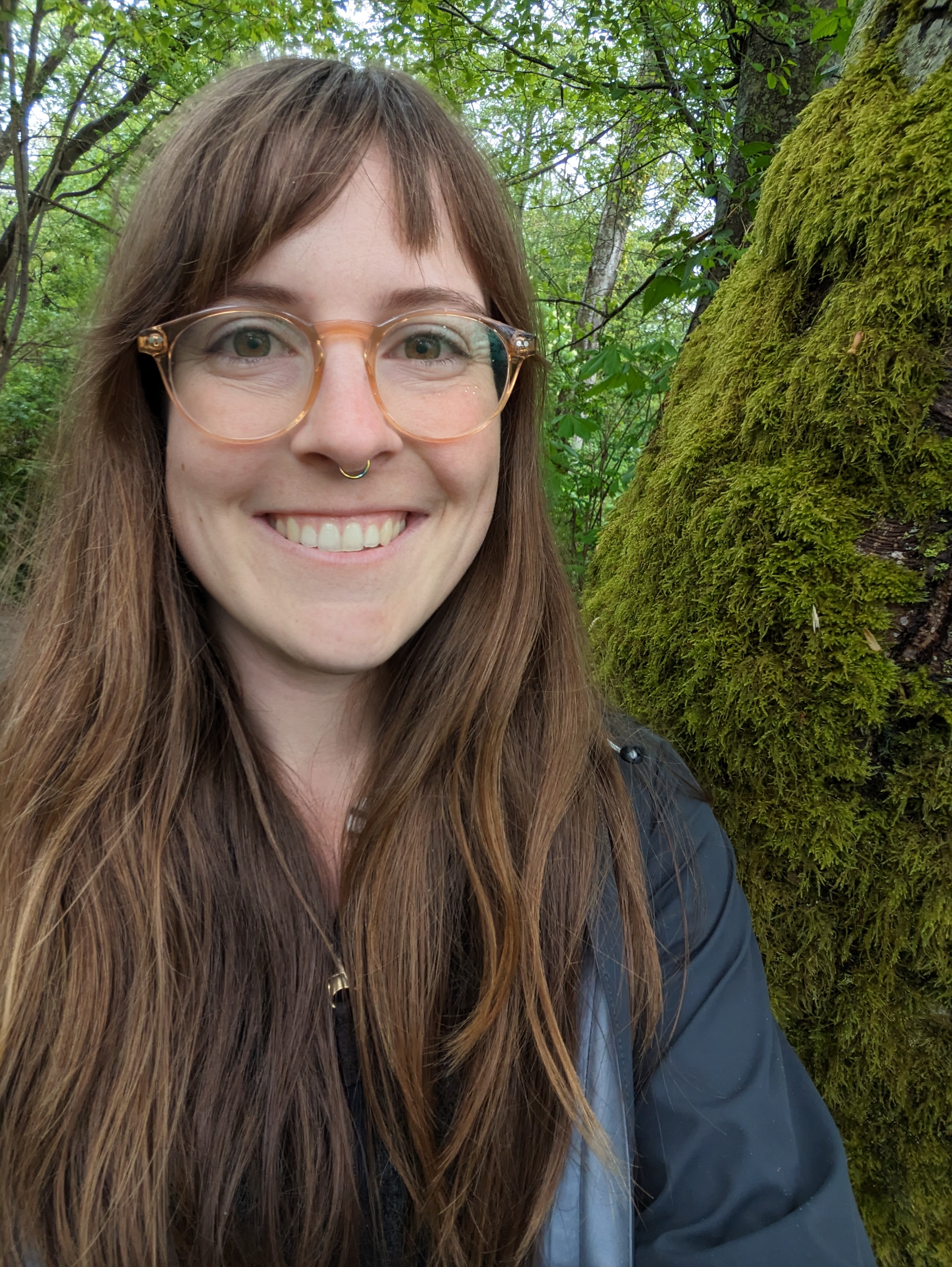
Title: Developing resources to assess climate change outlooks for British Columbia's forests.
About: Climate change is rapidly transforming forest ecosystems across British Columbia. Started in 2022 within the BC Ministry of Forests, the Future Forest Ecosystems Centre is a research-oriented team assembled to tackle complex questions about the stability and resilience for British Columbia’s forests to the effects of ongoing climate change, drought, pests and fire. The focus of their work is to develop support tools for ecosystem managers to incorporate climate change adaptation and risk mitigation into their work. One such tool is developing climate change outlooks for native tree species across the province, combining climate change predictions and historical climate drivers as a resource for sustainably managing our forests into the future.
I will join the team to help synthesize information for this project, drawing on published literature, expert knowledge, silvics data, and climate change projections. My work will focus on identifying key climate drivers of historical species distributions across the province using literature review and statistical modeling. I will also integrate ecological knowledge and observed climate impacts to develop a holistic summary of projected future impacts on these tree species across British Columbia’s diverse forest ecosystems.
2024 Interns
Pablo Sandoval Acuña, Canadian Organization for Tropical Education and Rainforest Conservation
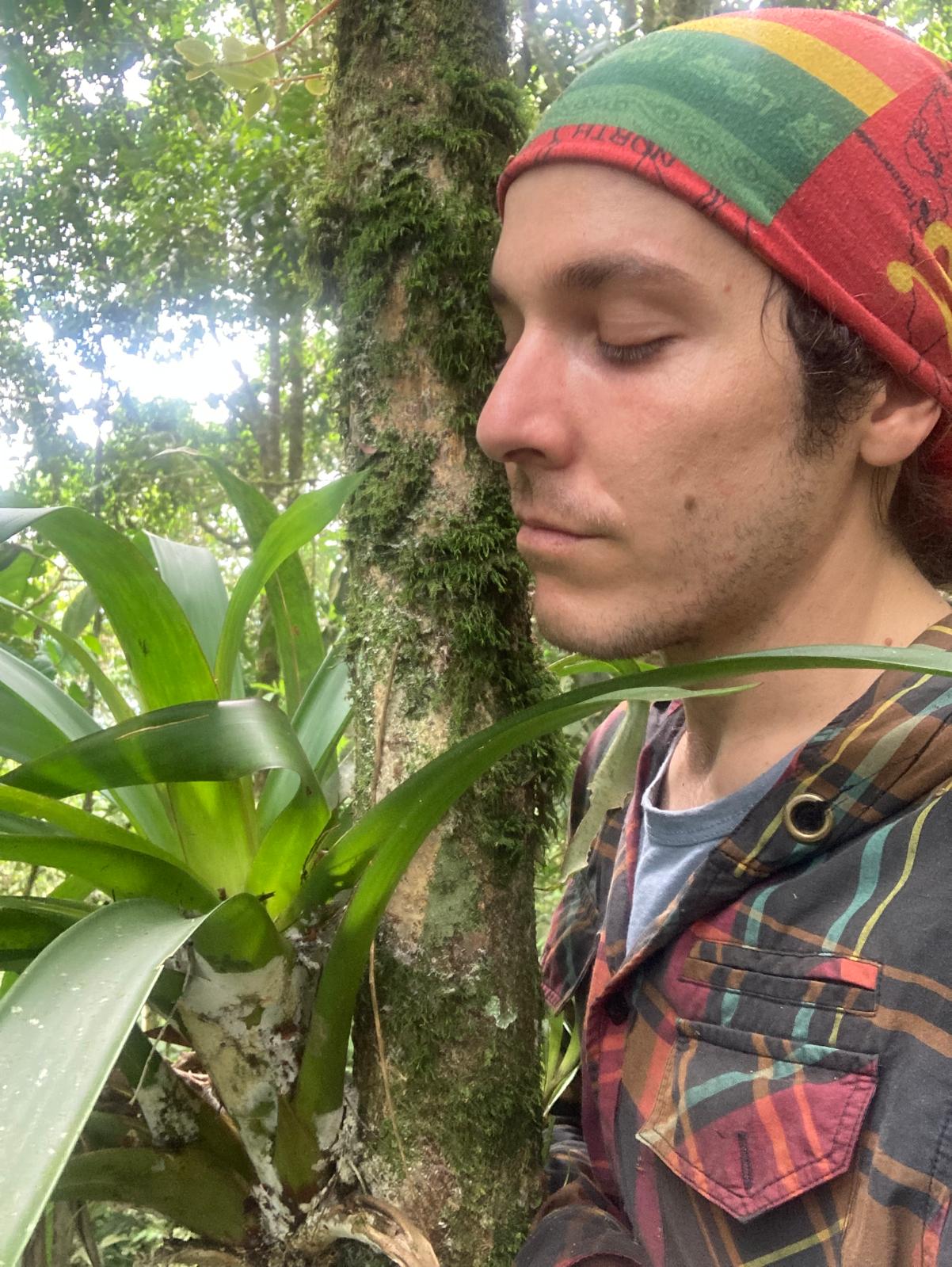
Title: Field guides creation and translation services for The Canadian Organization for Tropical Education and Rainforest Conservation (COTERC)
About: The Canadian Organization for Tropical Education and Rainforest Conservation (COTERC) works in Costa Rica at Caño Palma Biological Station, researching and communicating the importance of tropical rainforest conservation to the scientific community and local elementary schools. For this, I created bilingual field guides of common trees and snakes around the station, intended to inform kids, volunteers, interns, and researchers about the species in the area, with tips on identifying them and general ecological information.
I also helped edit and translate previous final research reports that COTERC must present to the Costa Rican Ministry of Environment and Energy for every annual project they conduct at the station. These reports, written in Spanish by non-native speakers, had to be edited and translated so the organization board (non-Spanish speakers) could incorporate new Ministry requirements.
Katie Goodwin, BC Ministry of Forests
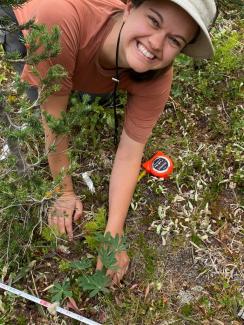
Title: Incorporating landscape resilience to climate change in northeastern BC wildfire recovery and forest management planning.
About: Climate change is dramatically altering the wildfire regime of northeastern British Columbia. Changing disturbance regimes can alter post-fire succession trajectories, and lead to novel ecological communities that might misalign with the communities' values of the land (e.g., cultural, ecological, economical). In 2023, North Peace wildfires in Northeast B.C. were unprecedented in size, number and severity. Specifically, 80% of the record-breaking 2,840,545 ha that burned province-wide occurred in this region including Donnie Creek, the largest wildfire ever recorded in Canadian history. A multi-government team composed of B.C. and five First Nations governments (Blueberry River, Doig River, Fort Nelson, Halfway River, and Prophet River First Nations) was formed to collaboratively lead wildfire recovery in the area. For this internship, I joined the team and will examine how we can enhance landscape resilience to mitigate the effects of continued climate change (i.e., increased drought and fire intensity and frequency) through changes in forest management. I will weave together indigenous knowledge and western science to develop an assessment report and recommendations for wildfire recovery and forest management planning for the team that incorporate climate change resiliency and aligns with the communities' values of the land.
Rory Macklin, Birds Canada
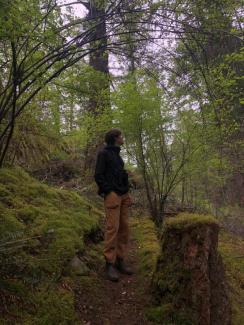
Title: Understanding human factors affecting the distribution of sea ducks within the Salish Sea.
About: The Salish Sea is an area of high human density and commercial importance, generating potentially significant anthropogenic pressures on overwintering sea ducks, many populations of which are thought to be declining. As these pressures occur on both sides of the international border that bisects the Salish Sea, the most accurate assessment of these impacts would include data in both Canadian and American waters. This internship aims to align and compile citizen science datasets across the Canada-US border to better understand human factors affecting the distribution of sea ducks within the Salish Sea. In particular, we hope to assess the impact of vessel traffic on the distribution of these birds. Do they avoid areas of high vessel density? Is vessel disturbance contributing to a reduction in the proportion of otherwise usable habitat? Using these extensive citizen science datasets, we hope to be able to investigate a potentially salient driver of population change among these species, and demonstrate the benefits of collaborating across international borders to best examine questions of critical conservation importance.
Mohammadjavad Meghrazi, Vancouver Avian Research Centre (VARC)
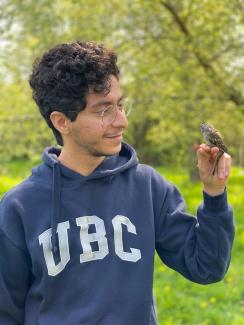
Title: Evaluation of patterns of mass gain during migration stopover within and across bird species
About: Bird populations are declining globally, nationally, and provincially. One of the key drivers of migratory songbird population dynamics is the availability and suitability of migration stopover habitat. VARC (a registered charity run mostly by volunteers) has been monitoring bird migration at ƛ̓éxətəm (tla-hut-um) Regional Park (formerly known as Colony Farm Regional Park) since 2009. VARC data suggest that the park is used by a wide diversity of bird species; in particular, the park receives a large influx of young birds each fall. However, it is unclear if birds are stopping in the park because it is the largest patch of habitat in the region or because the habitat provides ecological value (e.g., a decent food supply). The project that will be the focus of the internship is the evaluation of patterns of mass gain during migration stopover within and across bird species. The central assumption is that if birds are putting on mass during stopover, then the habitat must be providing value. Differential mass gain patterns among species, between sexes, or between age classes will provide insight into key ecological patterns, which in turn could support land management decisions in the park.
Sarah Ravoth, Environment and Climate Change Canada (ECCC)
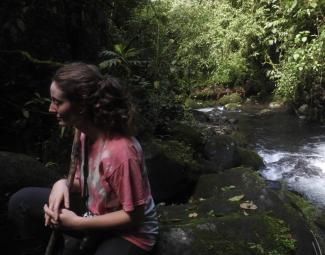
Title: Rescue of a 20-year dataset on population dynamics of an endangered seabird species along the British Columbia coast
About: Marbled murrelets are a small seabird species found throughout the North Pacific. They spend most of their time at sea, foraging for small prey underwater, but have gained public and conservation attention due to their dependence on old-growth forests as nesting habitat. Due to habitat loss of old-growth forests, the marbled murrelet is listed as threatened under the Canadian Species at Risk Act. Beginning in 1996 and ongoing, a marine radar monitoring project was developed, collecting bird abundance and environmental data at radar stations set up along the entirety of the British Columbia coast. In this internship, I will work with the marbled murrelet team to resolve inconsistencies in the data, archive the data in persistent formats to safeguard against loss, design a data-updating pipeline, draft detailed data collection and use protocols, and publish the completed dataset and its metadata in publicly accessible repositories to promote open science and inform seabird management.
Pablo Sandoval Acuna, Canadian Organization for Tropical Education and Rainforest Conservation (COTERC)
Title:
About:
Jef Vreys, Ministry of Water, Land and Resource Stewardship
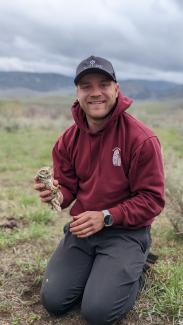
Title: Restoring Antelope Brush Ecosystems in the South Okanagan.
About: Antelope brush ecosystems are some of the most endangered in Canada, yet they contain some of the highest densities of species at risk. Urban and agricultural development has led to a decline in the extent and quality of antelope brush ecosystems. Several sites in the South Okanagan have been identified as potential targets for restoration efforts.
During my internship, I will visit the sites identified for restoration. The objective is to assess the current ecological integrity of each site and implement a monitoring protocol to detect changes over time. Additionally, I will look for restoration opportunities and develop an action plan for each site.
2023 Interns
Jennifer Green, U.S. National Park Service
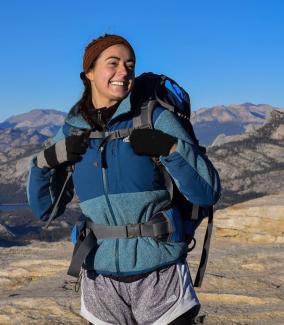
Title: Assessing Black Bear Spatiotemporal and Foraging Behaviors in Response to Human Disturbance in Yosemite National Park, USA.
About: Management of black bears in Yosemite National Park, USA has been effective in reducing human-bear incidents over time. However, black bears, by nature, are susceptible to habituation and food conditioning. Anthropogenic and non-native foods, such as human food waste and cultivated apples, remain available to bears near developed sites. Further, park closures in 2020 in response to the COVID-19 pandemic provided a change in human visitation that may have affected current bear behavior and increased habituation.
In this internship, I will help the Yosemite Wildlife Management Program analyze bear GPS collar data before, during, and after COVID-19 closures in Yosemite National Park as well as deploy camera traps to understand bear spatiotemporal activity patterns and habitat selection in relation to human presence, infrastructure, and resource availability. Additionally, in order to understand dietary and foraging patterns, I will assist in processing bear feces and in mapping fruiting vegetation attractants in Yosemite Valley. This work can help inform the agency's efforts to reduce human-bear incidents in Yosemite National Park and improve outcomes for both bears and visitors.
Natasha Klasios, Raincoast Conservation: Healthy Waters Initiative
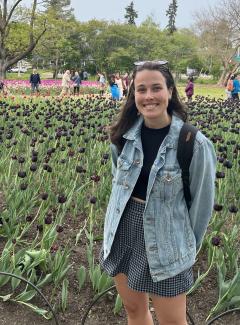
Title: Healthy Waters: implementing community-based water pollution monitoring programs and evaluating nonpoint sources of pollution in watersheds.
About: This internship is part of Raincoast Conservation's new Healthy Waters initative which is focused on water quality and water pollution. Water creates and sustains healthy habitats for fish and wildlife, supports biodiversity, and provides drinking water. However, the health and functioning of watersheds and aquatic habitats are increasingly threatened by pollutants from human activities and urban development. There is a distinct need for comprehensive, community based approaches to water quality monitoring within watersheds in British Columbia to understand what contaminants are present, what the sources of these contaminants are, and to what extent these pollutants may present risk to aquatic wildlife.
The objectives of this internship are two-pronged. Firstly, I will assist the Healthy Waters team in the initial implementation of monitoring programs in partnership with watershed-based communities. We will also develop a survey which will be used to understand the relevance of the Healthy Waters initative for program partners, and furthermore the survey will be also used to identify key community concerns about water and water pollution. The second objective of this internship is to better understand sources of pollution to watersheds. This internship will be focused on the biosolids file, which has gained recent attention due to human health and environmental concerns stemming from the practice of land applying biosolids. I will conduct a literature review to evaluate biosolids as a non point source of pollution to healthy waters, focusing on the contaminants present in biosolids, their fate, and the potential risk of these contaminants for aquatic habitats. This work will assist Healthy Waters in better understanding sources of pollution to watersheds and will provide insight for future recommendations for biosolid managment in British Columbia.
Jenny Munoz, Environment and Climate Change Canada (ECCC)
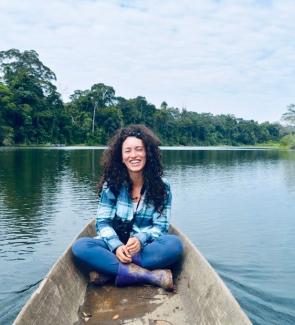
Title: Understanding the perceptions and experiences of various marginalized communities in relation to nature, with a specific focus on wetlands.
About: This internship is part of a joint effort involving Environment and Climate Change Canada (ECCC), the Canadian Wildlife Service (CWS), Joint Venture partners (JV), and the University of Alberta.
My primary task will involve working with data from a national survey, designed to gain a better understanding of Canadians' perceptions of, and experiences with, wetlands and other bird habitat settings. Using this extensive dataset in combination with Canada Census data, I will analyze to explore the relationship between marginalized communities and nature, specifically wetlands.
Particularly we aim to understand a) What are the social, financial, cultural, and linguistic barriers preventing marginalized communities from accessing wetlands and other natural areas? b) How do the familiarity with various wetland types and pro-environmental behaviors of marginalized communities differ, and to what extent are these views and behaviors influenced by their constraints in accessing wetlands and other habitats?
By addressing these questions, the Joint Ventures will be able to make better-informed management actions that equitably enhance access to marginalized communities and ultimately have more meaningful engagement with diverse communities.
Sarah Ravoth, Canadian Organization for Tropical Education and Rainforest Conservation

Title: Rescue of a 20-year marine turtle nesting & monitoring dataset in Caribbean Costa Rica
About: The beaches around Tortuguero, Costa Rica are a breeding hotspot for the Atlantic population of green turtles, but also support endangered hawksbills and leatherbacks. Each year for the past 20 years, Caño Palma Biological Station has run daily morning and night surveys along a 5-km beach transect, producing a highly detailed and consistent dataset on nesting success, phenology, migration, female health, and anthropogenic disturbance. Declines in all nesting species in the region makes this dataset especially valuable in tracking demography and mitigating extinction.
However, current data management make it difficult to use in analyses, prone to interpretation bias, and susceptible to file loss. The goal of this internship is to “rescue” the 20-year dataset—this includes standardizing, formatting, documenting, and archiving data to increase clarity and reduce error across years, as well as writing a data management manual for best practises in future years. As a result, we hope to increase dataset accessibility to researchers and ensure its longevity—the first step in designing and implementing conservation goals to protect these important marine species. This project is in partnership with COTERC and Caño Palma Biological Station (http://www.coterc.org).
Margaret Slein, Institute for Multidisciplinary Ecological Research in the Salish Sea (MERSS)
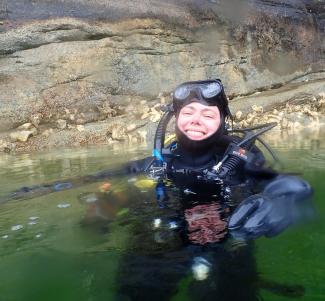
Title: Organizing a Bioblitz to contribute biodiversity observations as part of the Xetthecum Ecocultural Mapping Project.
About: IMERSS is a non-profit research and conservation group dedicated to transboundary long-term biodiversity monitoring in the Salish Sea bioregion, promoting an inclusive and holistic view of natural ecosystems, and in particular, the Xetthecum Ecocultural Mapping project. Serving the Xetthecum peoples in the immediate future, this project combines Indigenous ways of knowing with Western science and makes the collected information publicly available and usable. Beyond the important aim of supporting local ways of knowing, this project is a pilot that will serve as a model for an eco-cultural mapping framework to collect and curate biodiversity data. This model will be adapted across the Salish Sea and North America in collaboration with WhiteSwan Environmental and the America Indian Higher Education Consortium.
Through my internship, I will a) collate a formal documentation of the data management plan and b) coordinate and execute a bioblitz with local and non-local experts and researchers in support of the Xetthecum Ecocultural Mapping project. This will involve building connections with stakeholders across Galiano Island in addition to coordinating infrastructure to host and execute a three-day intensive bioblitz with biodiversity surveys. The outputs from this citizen science event will involve adding ecological data to the Xetthecum Ecocultural Mapping public website and then connecting it with traditional ecological knowledge for public use.
2022 Interns
Alicia Andersen, Pacific Salmon Foundation
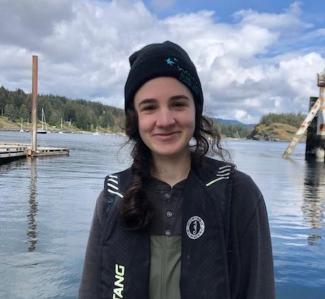
Title: Assessing Pacific salmon in British Columbia by defining marine climate indicators, identifying marine zones, and evaluating salmon sensitivity components
About: This internship is in collaboration with the Pacific Salmon Foundation (PSF). PSF has developed the Pacific Salmon Explorer, which is an online tool to provide the best data available in British Columbia on the status of salmon populations and their habitats. This tool is being expanded and updated regularly with new data as they become available. Currently, this tool includes anthropogenic pressures in the freshwater environment that salmon experience during spawning and other freshwater life stages. However, PSF is undertaking a multi-year initiative to incorporate freshwater and marine climate indicators and assessments of climate change vulnerability of salmon populations into the Pacific Salmon Explorer.
The intern will contribute to this broader initiative by defining marine climate indicators to add to the Pacific Salmon Explorer and identifying marine zones that have unique climatic conditions and will be the spatial scale at which climate indicators are assessed. Additionally, the project will evaluate the sensitivity of Pacific salmon to climate changes in their marine environment. Overall, this will contribute towards developing a data-driven climate change vulnerability assessment for salmon that integrates the freshwater and marine environmental components, as well as salmon sensitivity components.
Mannfred Boehm, Atlantic Canada Conservation Data Centre (ACCDC)
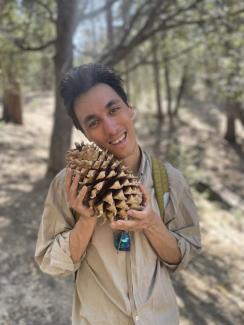
Title: Documenting and Databasing Species at Risk in Atlantic CanadaSecond Column
About: This internship is in collaboration with the Atlantic Canada Conservation Data Centre (AC CDC). The AC CDC maintains the primary database of occurrence information on rare and at-risk species in Atlantic Canada and is a partner to provincial and federal agencies and NGOs who manage biodiversity. AC CDC data is consulted in all environmental impact assessments, federal and provincial Species at Risk status assessment and recovery, government and NGO protected area acquisition and management, provincial forestry, and many other applications.
I will be assisting with two projects that are documenting occurrences of rare or at-risk plant species in New Brunswick (rediscovery of historic occurrences of critically imperiled species) and Nova Scotia (targeted inventory of Atlantic Coastal Plain Species at Risk in southwestern NS). I will join AC CDC botanists visiting these high priority regions to assist with plant inventories, and learn how this information is databased for its downstream applications. New Species at Risk occurrence data and negative data will facilitate status re-assessments of the Atlantic flora.
Amy Forsythe, Vancouver Board of Parks and Recreation
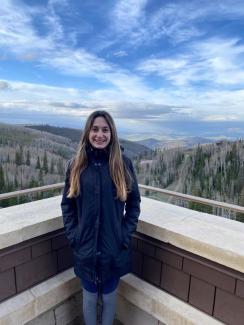
Title: Modeling population growth to minimize human-wildlife conflict in Stanley Park
About: The Vancouver Board of Parks and Recreation will support the development of an analytical model that can estimate population growth rates in coyotes. Human-wildlife conflicts are increasing in the City of Vancouver and understanding coyote population growth under different conditions will inform wildlife management decisions to affect human behavior and conflict with coyote populations. The results of this project will provide a range of growth rates that we should expect from coyotes, in normal and small populations and under different levels of reproduction, immigration, and food resources. The main goal of the demographic modeling will be to inform practical management practices through an understanding of whether wildlife aggression develops from rapid population growth and overabundances or from individual animals.
Rory Macklin, Stanley Park Ecology Society

Title: Analysing and Advising on Citizen Science Programs in Stanley Park
About: This project is in collaboration with the Stanley Park Ecology Society (SPES), which has carried out conservation work and long-term monitoring in Stanley Park, Vancouver, for over 20 years. With so much data available, there have been multiple collaborations between UBC and SPES, and this position will add to that long-standing relationship.
The primary focus of this internship will be to analyse a dataset of ~20 years of bird monitoring in Stanley Park. This may reveal long-term trends in bird abundance in the park and can return valuable information to SPES and the public who have been conducting this program for so long. Looking at this dataset will allow recommendations to be made on the data collection process to allow further analysis in the future, with these recommendations perhaps being more widely applicable to other SPES programs. As well, through the opportunity to participate in and lead some of the public-facing conservation programs run by SPES, I hope to gain experience in local conservation, and see the impact it can have first hand. This internship will provide another exciting collaboration between the research institutions at UBC and the excellent local conservation efforts carried out by SPES.
Zana Mody, ESSA

Title: Developing a Mi’kmaw Stretgic Plan for Nature-based Climate Solutions in Cape Breton to support Indigenous Protected and Conserved Areas in Nova Scotia
About: This project is in collaboration with ESSA and their client, the Unama’ki Institute for Natural Resources (UINR) in Cape Breton, Nova Scotia, who are leading proponents of Indigenous Protected and Conserved Areas (IPCA) in Canada. The project is focused on developing a Mi’kmaw Strategic Plan for Nature-based Climate Solutions which ultimately will support IPCA development in Nova Scotia. The Mi’kmaw plan will be the first plan of its kind in Canada and serve as a model for other Nations initiating similar programs on their territories. UINR is well connected to organizations leading climate and land protection initiatives across Canada, such as the Assembly of First Nations and the Conservation through Reconciliation Partnership.
The main components of this internship will be synthesizing information on terrestrial and marine (blue) carbon sequestration, interviewing or following up with interviewees to clarify technical matters, writing draft sections of the Strategic Plan (including developing a table of themes/actions), and supporting science communication materials (such as infographics and StoryMaps). The primary internship deliverables include:
· Mi’kmaw Strategic Plan for Nature-based Climate Solutions (technical report with appendices); co-developed with ESSA staff and subcontractors
· Public-facing infographics and StoryMap (led by ESSA)
Lili Simon, Environment & Climate Change Canada / Ducks Unlimited Canada
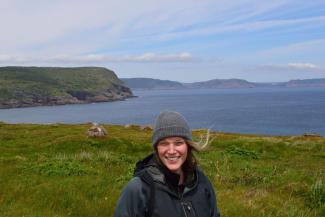
Title: Developing a habitat restoration spatial database
About: This internship is in collaboration with the Pacific Birds Habitat Joint Venture (PBHJV) and Canadian Intermountain Joint Venture (CIJV), which are regional conservation partners between government and non-government organizations in British Columbia (BC), with the collective aim of protecting birds and bird habitat. Since 1991, these organizations have restored and protected millions of hectares of ecologically biodiverse habitat across BC. I will primarily be working with Environment & Climate Change Canada, Ducks Unlimited Canada, and Nature Trust of BC staff members to develop a habitat restoration spatial database to track the JV partners’ collective progress towards the specific habitat goals (e.g., estuary, riparian forest, etc.) set out in the recently published 10-year PBHJV and CIJV Implementation Plans. The database will also eventually facilitate the evaluation of species response to habitat conservation measures.
2021 Interns
Julia Craig, Gros Morne Summer Music
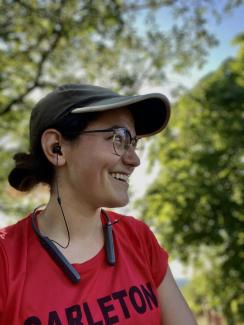
Title: Writing children’s fiction about extinction
The reality that we are in the midst of a 6th major extinction event is becoming more concrete with each species that is irrevocably lost. Hope for the future of biodiversity depends on the present and upcoming generations and their knowledge of, and relationship with, the non-human life on the planet. We seek to wed science and art through the creation of a fictional world that is grounded in the factual complexities of Earth’s ecosystems, and to use compelling storytelling to describe extinction in the distant past, the present, and the immediate future. We hope to teach younger readers fundamental biological concepts through story at the same time as evoking a sense of urgency and love for the planet and its many creatures, particularly those most threated by human action. The student will contribute to the project by offering the story a firm grounding in ecology and prehistory as well as choosing key species throughout history which offer key lessons about extinction in the past and present.
Francisco Diaz, WWF US - Wildlife Conservation
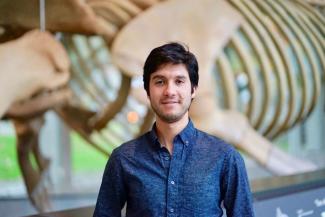
Title: Characterizing and modelling movements of individual elephants in the Kavango-Zambezi transfrontier conservation area
The Kavango-Zambezi Transfrontier Conservation area (KAZA) has the world's largest remaining population of African elephants, yet their conservation in this region is faced with a number of challenges, including poaching climate change, increasing anthropogenic activity, and fragmentation and fracturing of available habitat by a variety of boundaries. WWF has a long-term research project in this area looking at elephant space use, movement ecology, and migratory behaviour.
The main purpose of this internship is to start the elephant movement modelling process with a literature review, data manipulation, and statistical analyses. The development of a predictive model that recaptures the movement dynamics, could be use to simulate movement paths in response to changes in anthropogenic development (roads, settlements), climatic conditions, fence removal, etc. This would be invaluable in scenario evaluation for future conservation planning, and could also be a useful tool to engage a variety of stakeholders, including local communities, in elephant conservation and natural resource management.
Michael Procko, BC Parks
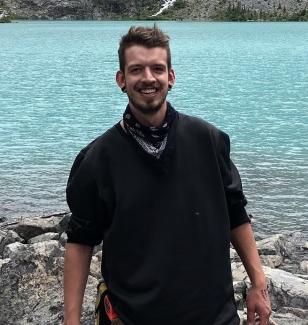
Title: Assessing Large Mammal Spatiotemporal Responses to Recreational Pressures in Golden Ears Provincial Park
This project is supplemental to Michael's MSc work that originally included the deployment and maintenance of nearly 60 camera traps in Golden Ears Provincial Park and the adjacent landscapes. These cameras were set up to monitor wildlife and human uses of the land, and collected over one million images throughout the year-long study period. All images have since been IDed, and are being utilized to discern whether certain recreational types or quantities have the potential to displace wildlife throughout the park. Now, Michael will be translating the results of this research into tangible policy recommendations for BC Parks, as well as mapping areas where certain species of concern exist, in order to emphasize the need for reduced human activity in these spaces. The proposed outcomes of this project will assist in refining the park's current management plan, which explicitly outlines a dual-mandate of providing plentiful recreational opportunities for the general public, while simultaneously conserving natural spaces and their associated ecosystem services.
Anna Santo, Conservation Northwest
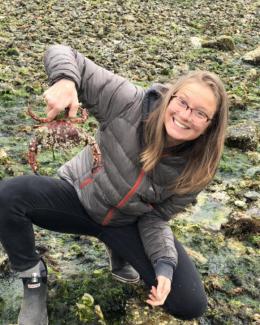
Title: Perceptions and values driving peoples’ attitudes toward grizzly bear reintroduction in the North Cascades
Habitat quality in the North Cascades ecosystem (Washington and British Columbia) is sufficient to support a population of grizzlies, but fewer than 10 exist. Any that remain are increasingly isolated with limited opportunity to breed. Grizzlies will likely disappear from the North Cascades ecosystem if active restoration does not occur.
The US National Park Service and US Fish and Wildlife Service solicited public comment on a proposed grizzly bear recovery plan in January 2017. However, in July 2020, the Trump-Pence administration abruptly terminated the process. The Biden-Harris administration has a legal obligation to reopen and issue a final determination.
The purpose of this internship is to identify perceptions and underlying values driving peoples’ attitudes toward grizzly bear reintroduction through systematic content analysis of public comments and outreach to key stakeholders and rights-holders. Lessons learned will inform final decision-making about the North Cascades grizzly reintroduction proposal and other future species reintroductions.
Keerthikrutha Seetharaman, A Rocha
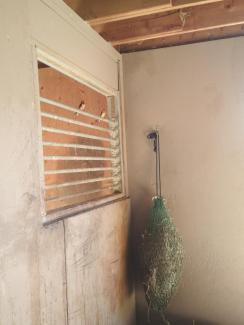
Barn swallows in the Lower Campbell River watershed are showing a decline in population. This possible decline in population was identified by researchers at A Rocha, an environmental conservation NGO. In my role as a BRITE intern with A Rocha, I hope to help identify the reason for their decline using various environmental factors.
Nicolás Talloni, Nature United and DFO

Title: Advancing Climate-Ready Fisheries in British Columbia
This internship will be a collaboration with Nature United (Canadian affiliate of The Nature Conservancy) and Fisheries and Oceans Canada (DFO) to build momentum on developing strategies to mitigate the risks posed by climate change to fisheries on the Pacific coast of Canada. While there is work being done to assess the risk and vulnerability of fisheries and fishing communities, less work is being done to communicate the current state of knowledge regarding risks to fisheries and communities and develop tools and approaches for assessing adaptation capacity. Firstly, this project will work towards synthesizing information on government policies, programs and initiatives that exist which include specific goals to address climate change risks associated with the fisheries sector in Canada. This will contribute towards a public-facing report by Nature United, that will communicate current understandings of climate change and fisheries in BC/Canada, identifies gaps and points towards strategies for navigating these. The second component of this internship will be to work closely with DFO and Nature United on a Fisheries Adaptation Status Evaluation (FASE) framework. This aim of this framework is to provide a scientifically rigorous qualitative framework to assess the ‘adaptation status’ of a given commercial fishery in BC or Canada that can operationalize DFO’s fisheries management processes (i.e. the annual Sustainability Survey, part of DFO’s Sustainable Fisheries Framework.
Evgeniya Yangel, Stewardship Centre for BC
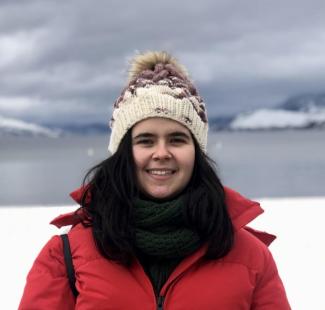
Title: Development of a Green Shores® for Homes Field Monitoring Protocol
This internship is a collaboration with Stewardship Centre for British Columbia (SCBC) and TransCoastal Adaptations Centre for Innovation for Nature-Based Solutions (TCA) to develop a field monitoring protocol for Green Shores® for Homes.
Green Shores for Homes (GSH) is a voluntary program that aims to minimize the impact of residential shoreline development on nearby ecosystems by relying on nature-based solutions and proper management. GSH is a credit-based rating system comprised of multiple sections (shoreline physical processes, shoreline habitat, water quality and shoreline stewardship). The program targets both freshwater and marine environments. GSH project is very collaborative and is being implemented in all British Columbia, Nova Scotia and Washington state. The program participation is advantageous as it benefits both homeowners and the environment by preserving residential properties and nature through the restoration of natural processes, enhancement of habitats, pollution reduction and more.
During this internship, my primary goal is to create a monitoring protocol for GSH participants to establish baselines and to assess, evaluate and measure the long-term effectiveness of the program in Nova Scotia and British Columbia on local ecosystems and its inhabitants.
2020 Interns
Sarah Blake, A Rocha Canada
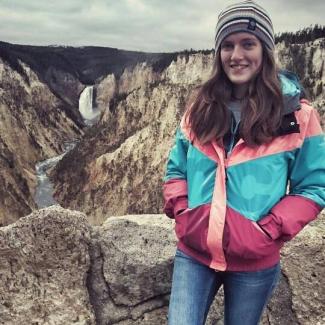
Title: Barn Swallow (Hirundo rustica) Conservation and Status of the Species in the Little Campbell River Watershed, South Surrey, BC
About: This project involved monitoring the nesting success of barn swallows in the local vicinity of the Little Campbell River Watershed in South Surrey. The nests were located via public surveys and visits to land owners with outbuildings on or near agricultural land. Nests were visited weekly and hatchlings were monitored using live feed cameras on extendable poles. This added to a larger dataset of a long term study being carried out by A Rocha Canada. I have been reviewing the literature on barn swallow conservation ahead of this years report on the status of the species in this local area. I also had the opportunity to assist in trapping and tagging hummingbirds as part of a separate study on exposure of nectivores to pesticides.
Devin de Zwaan, Canadian Wildlife Service
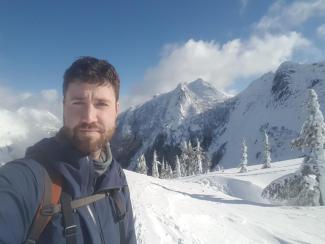
Title: Analysis of long-term regional bird banding data in British Columbia
About: Bird populations are declining rapidly across North America, particularly long-distance neotropical migrants. Long-distance migrants may be less able to track rapidly changing climate conditions, leading to phenological mismatches, suboptimal food resources at critical stopover sites, and ultimately reduced breeding productivity. Our current understanding of migration behaviour and timing along the Pacific flyway is limited compared to populations east of the Rocky Mountains. In collaboration with the Canadian Wildlife Service of Environment and Climate Change Canada, Devin will analyze long-term datasets from four migratory bird banding stations across British Columbia. These datasets span 10–40 years and over 200,000 captured songbirds, providing significant scope to address whether migration phenology or stopover habitat use is changing over time within and among species. For example, we might expect short-distance migrants to shift arrival dates earlier compared to long-distance migrants as they more closely track prevailing conditions. Additionally, late arriving individuals may exhibit reduced rates of fat accumulation, indicating that these birds are no longer tracking optimal conditions or that stopover habitat quality is declining. The results of this project will advance our understanding of migration patterns along the West Coast and inform prioritization of conservation investments, including habitat restoration and enhancement of monitored stopover habitat.
Harold Eyster, Stewardship Centre of BC
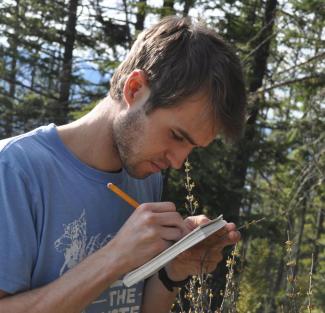
Title: Greater Vancouver Urban Landbird Count
About: Across North America, bird populations are plummeting: Since 1970, North America has lost nearly 3 billion birds. Much of these losses come from common, abundant species. To understand how Greater Vancouver can help to revert this decline, IRES PhD student Harold Eyster teamed up with the Stewardship Center for BC and Birds Canada. In June, Harold began conducting bird, plant, and landscape surveys across Greater Vancouver. Since then, he's conducted more than 500 point count surveys and 120 transect surveys. By comparing these data with data collected at the same sites in the 1960s, '70s and '90s, Harold will identify trends in local bird diversity, what is driving them, and how Vancouver can begin to reverse them. Moreover, by combining these data with data that Jaylen Bastos and the Stewardship Center for BC is collecting on roaming cat density (in another study), priority areas for cat awareness and management can be identified. More information about these studies can be found here: https://stewardshipcentrebc.ca/cats-and-birds/cats-and-birds-research-projects/
Elise Pletcher, Institute of Forest and Wildlife Research and Development, Cambodian Forest Administration
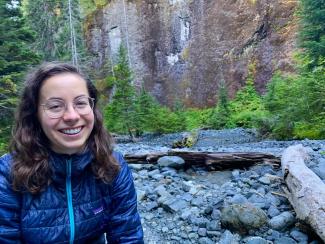
,
Title: An assessment of fire scenarios, current forest management practices, and post-fire/suppression vegetation structure for Khun Ream Forest Research Station, Siem Reap, Cambodia.
About: Forested landscapes within Cambodia are subject to frequent, low-intensity fires. Two distinct forest types exist within this landscape: open, grassy deciduous dipterocarp forests (DDF) and evergreen forests (EF). In recent years, the Forest Administration has suppressed fires around the Khun Ream Forest Research Station, in order to protect valuable timber species within EF. However, fire suppression may cause fuel to build up, and low-intensity ground fires could shift toward higher intensity fires. There has been an increase in fire severity in the last couple years, with multiple large fires occurring within the Khun Ream Forest Research Station. In response, the Institute of Forest and Wildlife Research and Development (IRD), a branch within the Cambodian Forest Administration, is interested in updating fire management plans within the forest research station. Further research into how both the DDF and EF vary in response to fire frequency and intensity is of critical importance for their long-term management and conservation. Therefore, I will collaborate with forest rangers to locate and map fire frequency. I will assess current fire management strategies (frequency of fires, active suppression, and locations throughout the field station), and compile information into a fire history database. Additionally, I will conduct post-fire vegetation surveys of forest structure and species composition. In culmination, I will create a fire scenarios report, including an assessment of the different management strategies applied in different sections of the forest research station and suggest how certain fire intervals (longer vs. shorter) may alter forest structure. The report will be presented to staff at the IRD office in Phnom Penh.
Megan Szojka, Yellowstone to Yukon Conservation Initiative (Y2Y)
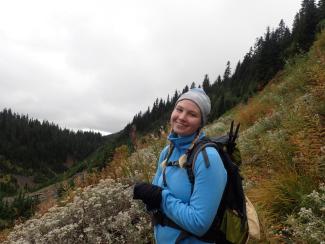
Title: Assessing recreational trail use to manage the Kananaskis-Ghost region's ecological integrity
About: The Kananaskis-Ghost region east of the Canadian Rocky Mountains is of high value to both humans and wildlife. It provides clean water sources, streams and rivers for fishing, land for trapping and hunting, as well as a large and heavily used recreational trail network. It is important habitat for elk, deer, grizzly bears, trout and other fish. As such, sound management is in the interest of the Alberta government, the private sector, and civil society. As outdoor recreation is projected to grow, impacts on wildlife may increase along with conflicts among users. To mitigate the risks of unmanaged recreational activities it is important to collect information on the type of trail-users (e.g., biking, hiking, off-highway vehicles, equestrians), and which trails each of these groups use most frequently. Traditionally, such data are collected via trail monitoring cameras; however, this is an expensive method that is not economically feasible for this system’s scale.
The goal of this internship is to work with Yellowstone to Yukon Conservation Initiative (https://y2y.net/about/) to compile information on alternative methods of accessing information on trail-use, such as cell-tower ‘ping’ data, smartphone apps, remote sensing (e.g., LiDAR, GIS), and community resources (e.g., maps, local and expert knowledge). This project will help increase capacity within Y2Y, strengthening and supporting work done by Drs. Aerin Jacob and Karine Pigeon to study recreation ecology and apply it to conservation in AB and BC. The research has the potential to improve the effectiveness of land-use and recreation management plans, which will help motivate actions that support protecting the environment while promoting high-quality outdoor recreation experiences.
2019 Interns
Sarah Amundrud, BC Ministry of Agriculture
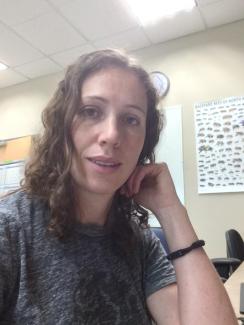
Title: Monitoring the spread of the invasive Brown Marmorated Stink Bug in the Okanagan
Description: The brown marmorated stink bug (BMSB), a serious invasive pest that feeds on more than 100 plant species, was first detected in British Columbia in 2015, and is now common in and around Kelowna, where it affects important local industries such as the apple, cherry and grape. In order to manage the BMSB in B.C., it is important to understand the timing and duration of the oviposition period of BMSB. Prior observations (2017-2018) show that early instar BMSB nymphs are still present in the fall, suggesting that either: (i) the oviposition period of females emerging from overwintering extends for several months; or alternatively (ii) at least some first-generation adults (i.e., those developing to adults in the summer) are maturing eggs and not entering into reproductive diapause (i.e., there is a partial second generation). However, the timing of oviposition is difficult to determine directly because BMSB eggs are hard to find relative to other life stages.
I will work with a group of research scientists at the Ministry of Agriculture to help determine the timing of other life stages and the reproductive status of adults throughout the summer. Using degree day modeling, I will explore the period over which BMSB eggs are being laid. If this analysis suggests a second generation is not currently occurring in British Columbia, I will determine how many additional heat units would be required for a second generation to occur. Understanding the phenology of BMSB will help predicting the establishment of this pest, as well as inform management decisions in the Okanagan.
Coren Forbes, Cleveland Metroparks, Cleveland, Ohio

Title: Assessing the population dynamics of White-tailed deer over 20 years of monitoring.
Description: As many species of predators are extirpated from parts of their native ranges, the management of prey populations largely falls to local governments. This presents a challenge as consistent long term strategies are required for successful population management. Cleveland Metroparks has intensively monitored and managed the White-tailed deer population in the Cleveland Area for over 20 years. This program has resulted in a huge amount of demographic data collected over its extensive length that has yet to be explored in depth. In this internship, Coreen will work with Cleveland Metroparks wildlife biologists to assess the impacts of changes in management over the duration of the program and develop recommendations for management into the future. We also hope to develop this program as a case study to inform the management of wildlife in other metropolitan areas.
Ludovic LeRenard, UBC Herbarium, Beaty Biodiversity Museum, fungal collections
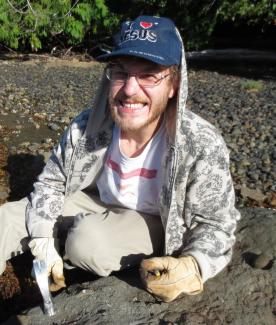
Title: Enhancing UBC Fungal Collections for 21st Century Mycologists
Description: The UBC Fungal Herbarium is one of the largest macro-fungal collections in the Pacific Northwest, with 30,000 specimens housed within the Beaty Biodiversity Museum. These collections are shared with numerous public portals including, MyCoPortal, Canadensys, Consortium of the Pacific Northwest Herbaria and the Global Biodiversity Information Facility, with over one billion record occurrences of earth’s organisms, and counting. Over the past year, the Beaty Biodiversity Museum has made significant upgrades in access to their collections database systems and broaden the access and increased research potential. More than ever, herbarium collections are in need of biologist who understand the importance of how collections are use in biodiversity research and how to enhance the data for improved user friendly systems for large biological datasets. As an intern, one of my primary tasks will be to enhance the collections data to the most up-to-date taxonomy and nomenclature, ensuring consistent and valid species concepts are reflected within the research collection. My other tasks will include consulting with staff on the best resources to link the specimens to public mycological resources, increasing public awareness of mushroom safety and contributing to writing up standard operating procedures to formalize collections activities to protect and preserve the collections for centuries of future research.
Evgeniya Yangel, Friends of Semiahmoo Bay Society
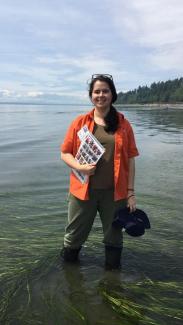
Title: Developing a monitoring plan and management recommendations for Boundary Bay eelgrass meadows and coordinating marine education outreach programs to raise marine conservation awareness
Description: Boundary Bay is an internationally recognized area for its aquatic and marine diversity. Some of the most extensive eelgrass meadows in British Columbia are located in Boundary Bay. Eelgrass habitats harbor organisms like invertebrates and juvenile fishes, carrying out nutrient cycling, organic carbon production and filtering water from the land as it enters bays and estuaries, yet the meadows are left unprotected. Poor water quality has been documented for the Boundary Bay that in turn negatively impacts marine ecosystems, human health, recreation and ability of Semiahmoo First Nation to safely harvest shellfish. Therefore, in order to evaluate and improve the current state of ecosystem health, I will help develop a plan for Boundary Bay eelgrass monitoring based on academic and citizen science components as well as will develop management recommendations that will communicate to both stakeholders and citizens. Additionally, I will be coordinating and leading marine interpretation programs at community events and local public schools to raise marine conservation awareness and foster citizen marine education.
2018 Interns
Emily Adamcyzk, Parks Canada, Gwaii Haanas
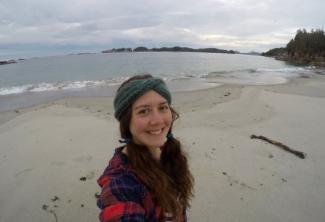
Title: Investigating technologies and methodologies to monitor short and potentially long-term impacts of pulse nutrient input into nearshore ecosystems related to a kelp forest restoration project in Gwaii Haanas
Description: The Gwaii Haanas National Marine Conservation Area Reserve is an archipelago of 138 islands in southern Haida Gwaii. These islands are home to over 6,800 species of plants and animals, making the region an excellent place to study biodiversity. However, the coastal marine ecosystems were altered in the early 1800s when sea otters were extirpated from Haida Gwaii due to the maritime fur trade. Since then, red sea urchin populations have exploded, resulting in massive urchin barrens. The urchins have overgrazed kelp forests, decreasing habitat for key kelp forest species including the endangered northern abalone. To remediate the effects of urchin overgrazing and facilitate kelp forest recovery, I will work with a large team, including scientists from Parks Canada, DFO, Florida State University, the Hakai Institute, and managers from the Pacific Urchin Harvesters Association and Council of the Haida Nation. We will remove (crush) urchins and I will monitor the ecological effects of releasing urchin biomass into the ecosystem as part of the first subtidal Parks Canada Agency Conservation and Restoration project in Canada.The eastern slope of the Peruvian Andes is an exceptionally biodiverse tropical landscape with 222 known mammal species, over 1,000 bird species, and tens of thousands of plant species. However, conservation action in this region can be handicapped by the overwhelming complexity and diversity in the system. Limited baseline information about species presence and abundance can restrain robust science- based decision making. Fortunately, local conservation organizations are building capacity to use new technologies to monitor and evaluate their natural heritage. For this internship, I will work with ACCA to develop a long-term monitoring program for continuous acoustic detection of bats and a pilot protocol to test technologies for detection of illegal logging and mining activities in the Amazon.
Patrick Burke, Stewardship Centre for BC
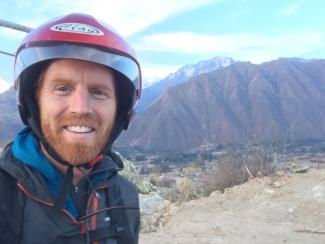
Title: Stewardship Roundtable at the International Ornithological Congress 2018
Description: What is the current state of bird stewardship in BC? How do climate change, invasive species, protected areas, and urban development affect stewardship and conservation decisions? What are key outcomes and actions that stewardship practitioners can take to protect, enhance, and restore bird populations and their habitat? Patrick will help convene a one-day Stewardship Roundtable associated with the IOC2018 to answer these questions. I will work with 13 partner organizations to plan, raise funds, and orchestrate the event in August which will feature research results, panel presentations, world café style discussions, story-telling, networking, and an evening plenary.
Sarah Harper, Ecotrust Canada

Title: Evidence to support Fisheries Policy Reform on Canada’s Pacific Coast
Description: Fisheries licensing policies in Canada’s Pacific region need reform. Increasingly, licenses are being consolidated into the hands of a few because of a system where licenses can easily be transferred. Anecdotal evidence suggests that foreign investors are taking advantage of this system to secure foreign capital in an increasingly volatile financial market. Fisheries policy makers in the Pacific region have been reluctant to reform fisheries policy in the way it has been done on the Atlantic coast, where fishers have lobbied heavily for the benefits of this resource to stay in the hands of Canadians, and specifically those who depend directly on fishing as a livelihood. To put pressure on decision-makers to consider a similar policy change in the Pacific region, data is urgently needed on who owns fishing licenses and quota and who is benefiting from the resource. In this internship position I will be compiling evidence to support efforts by Ecotrust and others in pushing for these important changes to the fisheries licensing system in the Pacific region.
Julian Heavyside, Qqs Projects Society and Hakai Institute
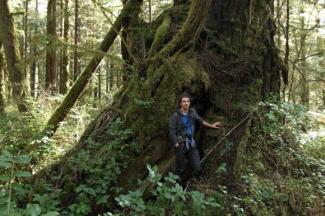
Title: Koeye Salmon Ecosystem Study working with youth campers in Heiltsuk traditional territory
Description: The Koeye River runs through a pristine mainland watershed in the heart of the Heiltsuk First Nation traditional territory on the central coast of British Columbia. Heiltsuk people have cherished Koeye for thousands of years and today, Qqs Projects Society— a Heiltsuk non-profit society based in Bella Bella, BC— runs a summer camp that supports youth engagement in science and traditional Heiltsuk culture at Koeye. Youth camp activities include opportunities to learn and practice Heiltsuk traditional language, laws, and cultural activities, and to partake in the ecological monitoring projects that take place at Koeye. For my internship, I will be working with youth campers on the Koeye Salmon Ecosystem Study to catch, tag, and track Dolly Varden fish in order to understand their ecological role as predators in the fish community and to incorporate these findings into the Koeye salmon management plan.
Nina Morrell, The Nature Trust of British Columbia

Title: Wetland and Riparian Area Importance Evaluation for BC
Description: The ecology and distribution of at-risk species and ecosystems is often poorly-known, and it remains challenging to identify areas for conservation. It is imperative to find opportunities to focus effort and limited conservation finds on properties that are most likely to contribute positively to the persistence of high conservation value species and communities. GIS tools are increasingly used to systematically assess the relative value of properties and help organizations determine priority areas for acquisition or conservation focus. In British Columbia, we currently lack the ability to evaluate candidate properties based on the importance of wetlands and riparian areas on properties, because layers that incorporate factors such as geography, hydrology, fish spawning, and bird abundance do not exist for the province. For this internship, I will develop and review the methodology for conservation prioritization used by the Nature Trust and produce province-wide GIS layers with relative ecological values for wetlands and riparian ecosystems.
Emilie Stump, Southeast Fisheries Science Center (SEFSC), National Marine Fisheries Service
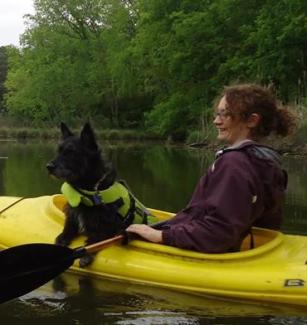
Title: Habitat selection and shifts in distribution of the dwarf seahorse, Hippocampus zosterae, in Biscayne Bay, Florida
Description: Understanding how the biodiversity present in agricultural landscapes varies through time and space, what drives this variation, and how this affects a range of ecosystem services is key to developing sustainable agricultural systems. Biodiversity in agricultural systems can be found in both planned biodiversity (associated with the planted crops and managed livestock) and associated biodiversity (flora and fauna present in hedgerows, forest buffers, wetlands, etc.). My project will use the UBC Farm as a case study to develop a comprehensive agricultural biodiversity monitoring program. I will begin building a long-term, biodiversity monitoring program that will incorporate needs of a working farm while still having the potential to offer new scientific insights and be exportable to other farms and agricultural landscapes.
Hannah Visty, Stanley Park Ecology Society
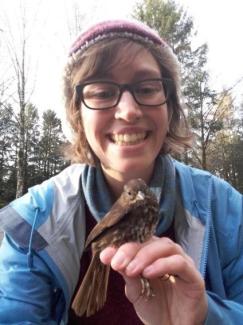
Title: Building a Bird Community Index for Stanley Park
Description: Bird Community Index (BCI) is a terrestrial ecosystem health and monitoring tool which takes presence of bird species and ranks the locations based on resource guilds needed to support the species seen. This allows us to summarize and quantify ecosystem functioning on multiple scales, thereby identifying the most or least diverse and healthy areas in the Park. Once the BCI is created, we can use past data to look for changes through time, as well as establish baselines that can serve future monitoring. My goal as an intern is not only to contribute to monitoring progress in the park, but to gain experience working closely with the community. I will use outreach and event days to engage locals in concepts of Park health and ecosystem stability. Stanley Park is uniquely situated as a place to demonstrate how urban environments can be accessible and biodiverse at the same time. Furthermore, I hope that the BCI will be an adaptable tool for other monitoring locations throughout the Lower Mainland.
2017 Interns
Patrick Burke, Amazon Conservation Association (ACA)
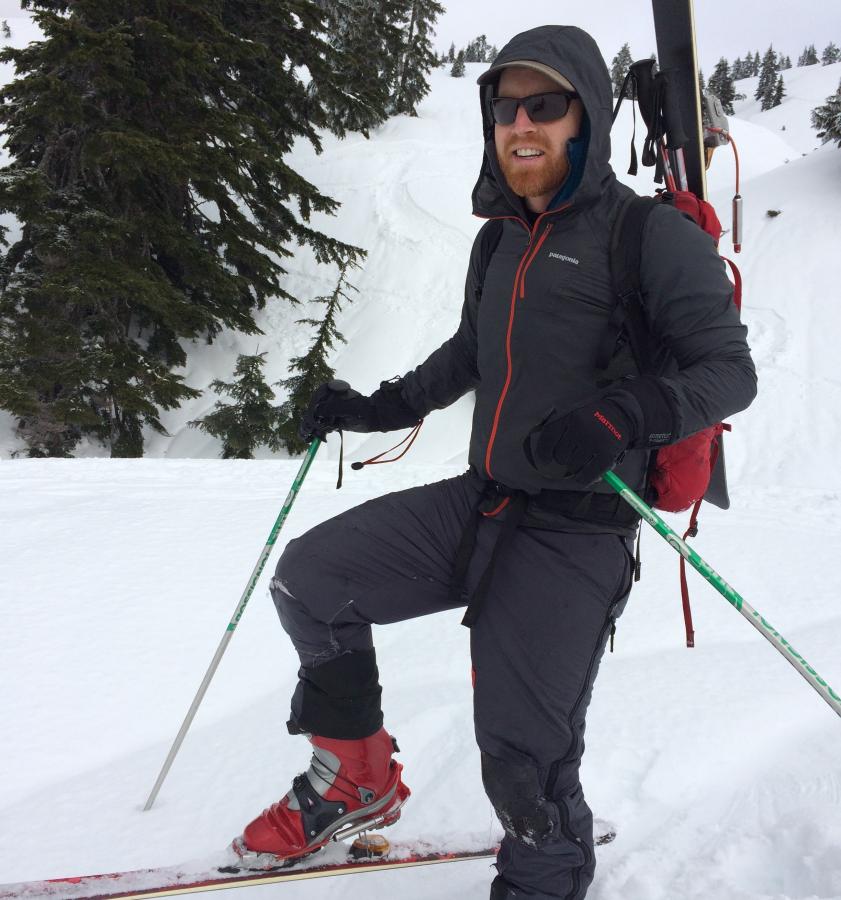
Title: Bioacoustic Monitoring in a Biodiversity Hotspot
Description: The eastern slope of the Peruvian Andes is an exceptionally biodiverse tropical landscape with 222 known mammal species, over 1,000 bird species, and tens of thousands of plant species. However, conservation action in this region can be handicapped by the overwhelming complexity and diversity in the system. Limited baseline information about species presence and abundance can restrain robust science- based decision making. Fortunately, local conservation organizations are building capacity to use new technologies to monitor and evaluate their natural heritage. For this internship, I will work with ACCA to develop a long-term monitoring program for continuous acoustic detection of bats and a pilot protocol to test technologies for detection of illegal logging and mining activities in the Amazon.
Alys Granados, Sierra Club BC
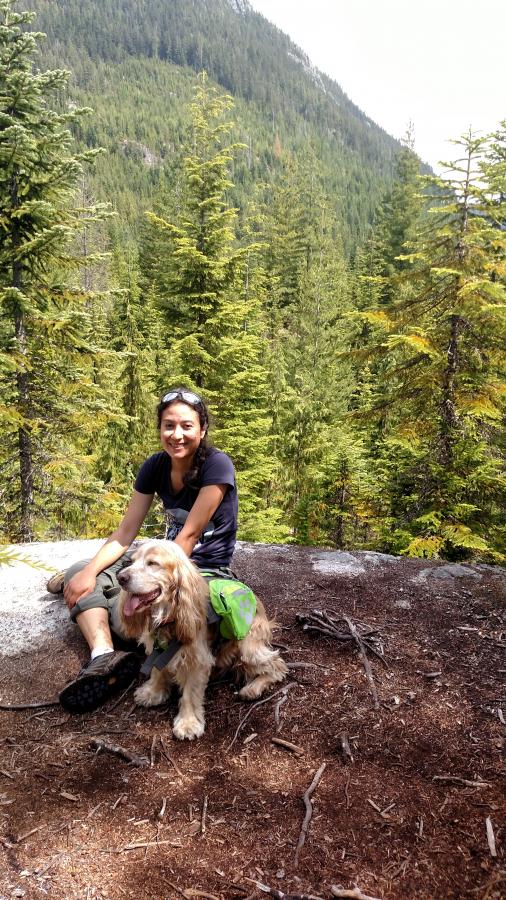
Title: Improving Public Awareness of Conservation Issues to Protect Old Growth Forests on Vancouver Island
Description: Coastal temperate rain forests are found only on Vancouver Island but these rare ecosystems are under threat from destructive logging practices. This negatively affects wildlife habitat, watersheds, and local economies. Old-growth forests play a critical role in mitigating the effects of climate change but their continued degradation threatens their carbon storage potential. In my internship, I will work closely with campaigners to develop and deliver reports and other forms of public communication to raise awareness and promote solutions to reduce human impact on these forests. I will also help Sierra Club BC with research, communication and building alliances supporting protection and restoration of BC's coastal temperate rain forest. Finally, I will utilize my background in science to assist with the review and integration of science-based information and review data on species habitat, ecological integrity and environmental services.
Paige Olmsted, Canadian Parks and Wilderness Society - BC Chapter
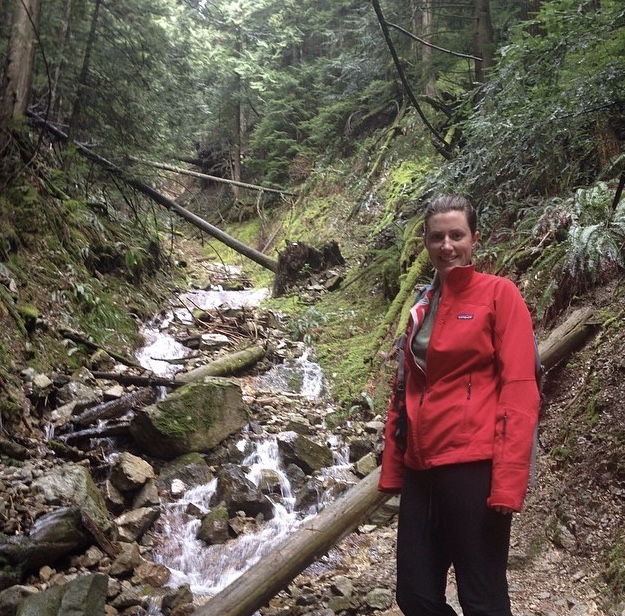
Title: Conservation Impact Investing to Support Protected Areas in BC
Description: CPAWS and provincial chapter CPAWS-BC play a critical role in the protection of Canada's public lands and water. Despite ambitious goals for protection, biodiversity conservation is chronically underfunded in Canada and around the world, and organizations are seeking new and innovative ways to engage funders. Social impact investing, which has leveraged capital in a variety of other social sectors (including health, education, and poverty alleviation), is attracting interest in the conservation sector, but there is a need to better understand the needs and constraints of the conservation organizations that could benefit from this funding stream. I will be working with CPAWS-BC to examine their current strategies and metrics for measuring impact, in an effort to assess the potential to engage in conservation impact investing projects. Our end goal is to both contribute to organizational level thinking about ecological impact assessment, and also advance the conversation in the conservation community regarding the potential for new pathways of financial support.
Jasmine Ono, Renaissance BioScience Corp
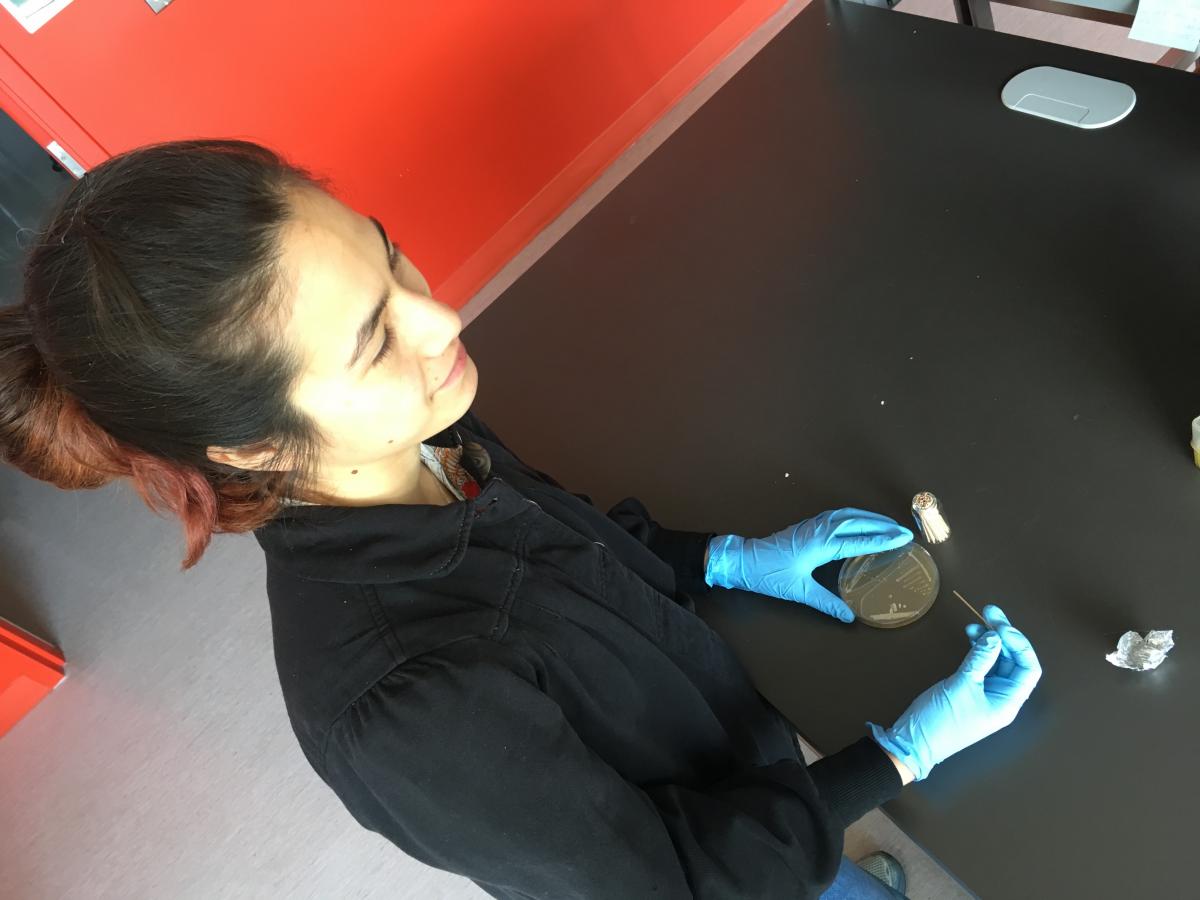
Title: Investigating the Stability of Hybrid Beer Yeast Over Multiple Re-pitches
Description: Yeast is an important ingredient in some of the most widely consumed food and beverages worldwide, including most baked goods, beer, and wine. Over thousands of years, humans have developed their favourite yeast strains and species for use in these products, but there is still space for improvement and innovation. RBSC develops new strains of yeast using the process of mating to incorporate key improvements, resulting in hybrid individuals. Natural hybrid yeast are also commonly used in beer brewing. This project seeks to understand how these hybrids act over time in situations where the same yeast is used repeatedly, allowing it to go through many generations of growth. I will re-pitch the same yeast into successive fermentations of beer and track many industrially important phenotypes, as well as their genotypes, in order to better understand the stability of these strains. This knowledge will ultimately lead to better brewing strains able to deliver a consistent product.
Ruth Sharpe, Vancouver Aquarium

Title: Science and Ocean Conservation Outreach
Description: This internship will help The Vancouver Aquarium's Education and Outreach department to reach more youth by exploring and initiating potential collaborations with suitable organizations and institutions, seeking out and applying for grants to allow greater access to The Aquarium education programs for disadvantaged, low-income youth and FNMI (First Nations, Métis and Indigenous) youth as well as starting to organize a day-long symposium for disadvantaged grade school kids on the subject of climate change and the oceans.
Natalie Westwood, UBC Farm

Title: Building an innovative long-term biodiversity monitoring program for the UBC Farm
Description: Understanding how the biodiversity present in agricultural landscapes varies through time and space, what drives this variation, and how this affects a range of ecosystem services is key to developing sustainable agricultural systems. Biodiversity in agricultural systems can be found in both planned biodiversity (associated with the planted crops and managed livestock) and associated biodiversity (flora and fauna present in hedgerows, forest buffers, wetlands, etc.). My project will use the UBC Farm as a case study to develop a comprehensive agricultural biodiversity monitoring program. I will begin building a long-term, biodiversity monitoring program that will incorporate needs of a working farm while still having the potential to offer new scientific insights and be exportable to other farms and agricultural landscapes.
2016 Interns
Philippe Fernandez, Operation Wallacea - Indonesia
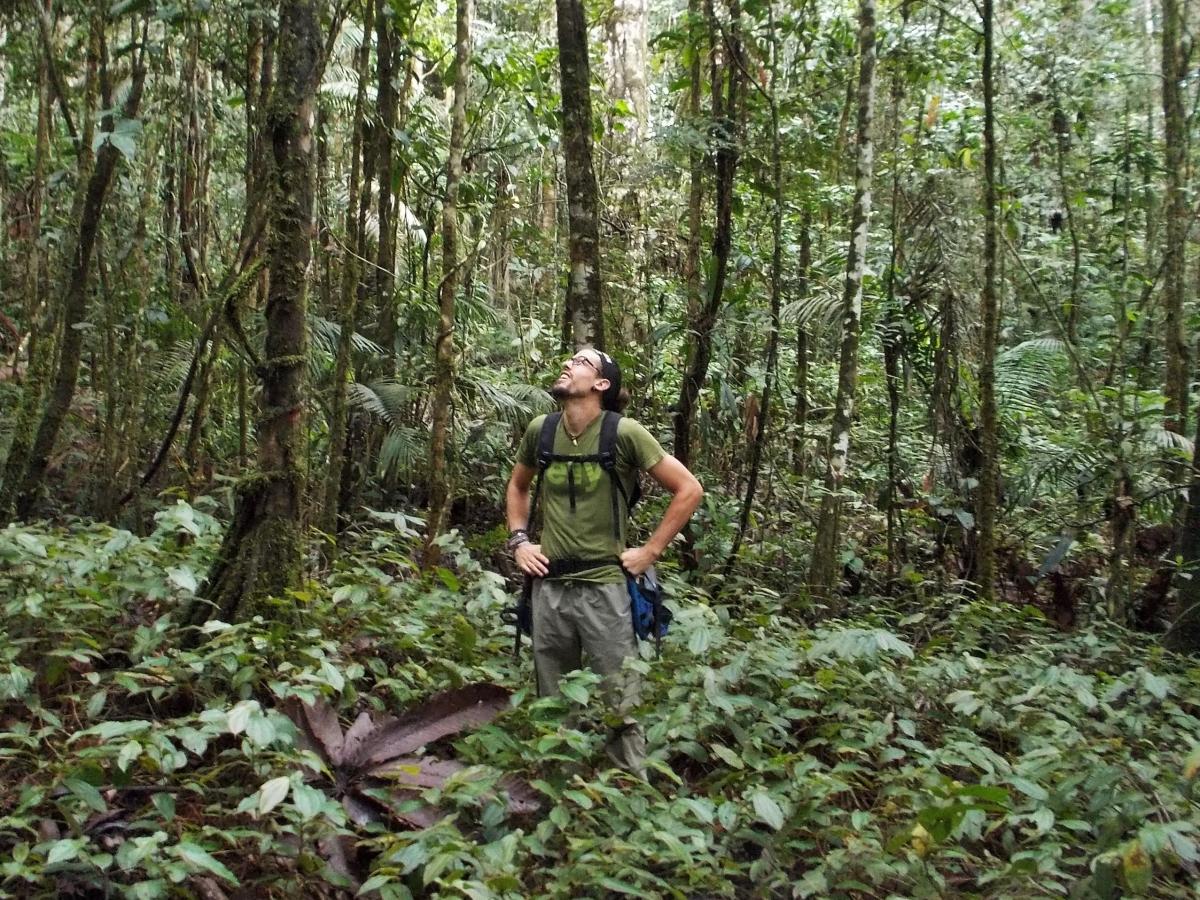
Title: Teaching tropical ecology on research stations in Indonesia
Description: Indonesia's rainforests are among the most biologically diverse in the world and are now facing unprecedented pressures through rapid loss of endemic species. During this internship, I will work for an organization that runs biological and conservation management research programs. I will teach tropical ecology, survey methods and jungle training with a high hands-on emphasis to visiting university and high school students on remote biological stations on Buton Island, Sulawesi, Indonesia. While allowing me to work alongside numerous scientists in a conservation management focus, this project will provide valuable experience towards my career goal and spread awareness and knowledge for conservation and biodiversity in the tropics.
Marybel Gomez, Bioversity International, Office of Nepal
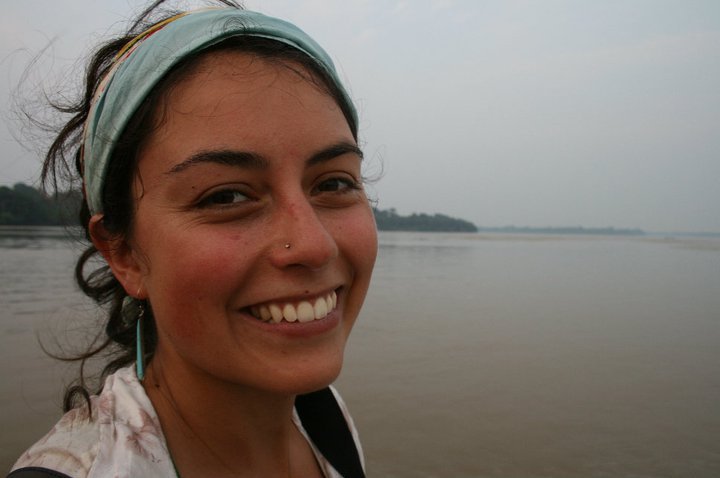
Title: Integrating traditional crop genetic diversity into technology: using a biodiversity portfolio approach to buffer against unpredictable environmental change in the Nepal Himalayas
Description: The diversity of local crop varieties in the Himalayan system in Nepal is one of the few natural resources available to mountain farmers for coping with their marginal and heterogeneous environments. The preservation of these traditional crop varieties, which represent significant reservoirs of globally important genetic traits such as cold-tolerance, is key to the sustainable development of local economies and high-mountain agricultural systems that are likely to be strongly affected by climate change. This project focuses on eight neglected and underused mountain crops, for which research and development has been relatively scarce to date. I will work in a multi-disciplinary and participatory setting to assist in field data collection and analysis, identify research priorities, and write public awareness materials to promote biodiverse agricultural production systems that will benefit farmers, the larger community, and provide a buffer against climate change.
Joon Seon (John) Lee, French National Institute for Agricultural Research (INRA) in Toulouse, France

Title: Agricultural diversity consists of numerous populations of native plants and animals around the world.
Description: I will be working with the Sunflower Genetics and Genomics team at the INRA (a French government agricultural institute) in Toulouse, France. They have developed a comprehensive transcriptome dataset of sunflower from their extensive sampling. As much as sunflower is recognized by its beauty, it is one of the most important crop plants for healthy oil and tasty seeds. Understanding its genomic and transcriptomic structure is crucial and essential for explaining the various phenotypes of this species. My project will be developing a pipeline for analyzing their transcriptome data in different genotypes of sunflower.
Micah Scholer, Wingspan National Bird of Prey Centre
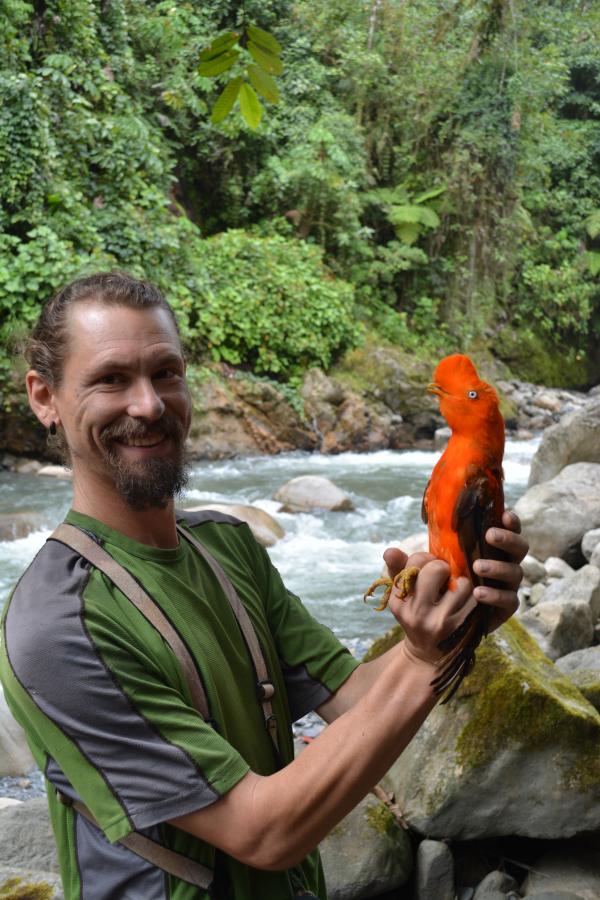
Title: Predicting the distribution of Karearea in plantation forests
Description: The endemic Karearea is New Zealand's only breeding falcon. Like many New Zealand birds, their numbers have declined since European settlement owing primarily to loss of native habitat and predation pressures from introduced mammals. On the North Island, much of the population now exists within the largest pine-plantations in the Southern Hemisphere. Using information on falcon nesting sites and territory locations collected since 1992, I will build spatially-explicit models depicting Karearea habitat use throughout these heavily managed non-native forests. The resulting maps will help guide survey efforts for breeding falcons and identify characteristics of the landscape affecting their distributions.
Adrian Semmelink, Stewardship Centre for BC
Title: Stewardship Practices Implementation and Assessment Project (2016)
Description: Voluntary stewardship actions on private land play an important role in safeguarding the natural areas that wildlife and species at risk need to live as there is currently no BC species at risk legislation. This internship will address threats to species at risk caused by agricultural intensification and land-use practices using a voluntary, multi-species approach. Specifically, I will be refining stewardship practice (SP) monitoring protocols, documenting implementation of SPs, and creating case studies of farmers who have successfully adopted SPs.
Matt Strimas-Mackey, Bird Studies Canada
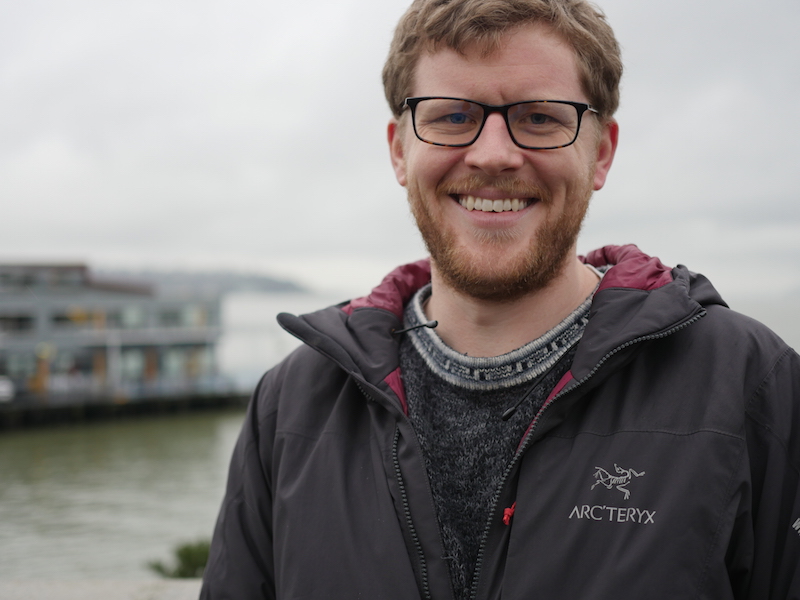
Title: Occupancy Modeling of Owls in British Columbia
Description: Bird Studies Canada has been collecting data on the distribution of owls throughout British Columbia and The Yukon for the past 15 years through its Nocturnal Owl Survey program. For this internship I will analyze these data using dynamic occupancy models to map owl distributions, examine changes in their distributions through time, and gain insights into the factors affecting these distributions. These findings will be used to inform ongoing conservation efforts for these species.
2015 Interns
Sarah Amundrud, Canadian Parks and Wilderness Society - BC
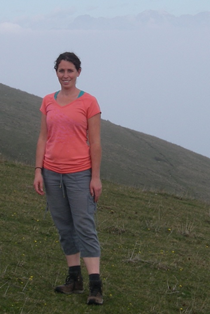
Title: The Southern Mountain Caribou and the Interior Temperate Rainforest
Description: Mountain caribou are one of the most endangered animals in North America, and over 90% of them are found in BC. As these animals require unbroken tracts of old-growth forests, logging presents one of the major threats to this species. I will produce a report and a presentation that will be used to inform CPAWS-BC and partners as they move forward on their mountain caribou campaign. The report and presentation will summarize the current status of the southern mountain caribou and contain a map of forest tenures and other industrial activity as it coincides with mountain caribou habitat. Based on an analysis of this map, I will work with CPAWS-BC staff to identify critical areas in need of protection and/or access restriction to ensure the recovery of mountain caribou.
Mollie Chapman, Stewardship Centre for British Columbia
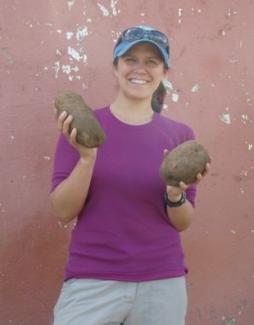
Title: Species at Risk on Agricultural Lands in BC: Improving Monitoring and Uptake of Voluntary Stewardship Practices
Description: Voluntary stewardship actions on private land play an important role in safeguarding the natural areas needed for species at risk. This internship addressed threats to species at risk caused by agricultural intensification and land-use practices using a multi-species approach. I participated in the Stewardship Center's efforts to develop monitoring protocols for stewardship practices as well as develop case studies of successful projects to help encourage additional farmers and landowners to participate.
Meagan Grabowski, Science Adventures Program, Yukon College
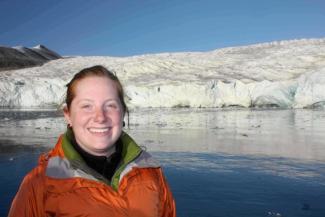
Title: Connecting Yukon scientists and educators
Description: For this internship I will be developing an online database of Yukon scientists that will be searchable by subject and grade-level for Yukon teachers to seek classroom speakers. This project will fill an important gap in connecting researchers to classrooms, and enable the process of connecting to be self-sustaining. Enabling communication between scientists and classrooms is of the utmost importance for facilitating the sharing and understanding of Yukon science and for inspiring the next generation of northern educators.
Sarah Klain, Island Institute
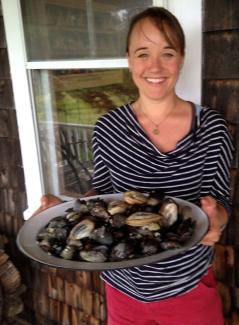
Title: Leaning into Wind: Lessons Learned on Engaging Communities Near Proposed Offshore Wind Farms
Description: I collaborated with the non-profit Island Institute in Rockland, Maine for three months where I worked closely with their community energy team. The Island Institute works to sustain Maine's island and remote coastal communities. This institute also exchanges ideas and experiences to further the sustainability of communities in Maine and elsewhere. Mitigating climate change requires decarbonizing our sources of electricity. Harnessing offshore wind promises abundant, renewable, low carbon electricity, particularly off the Atlantic seaboard. Offshore wind farms are, however, expensive, they can impact seabirds as well as other marine species and they may displace fishing effort. I collaborated with Island Institute's community energy team to write a report on lessons learned from this organization's engagement with local stakeholders, wind farm developers, government officials, scientists, and engineers. Island Institute has played both lead and peripheral roles in providing opportunities for mutual learning so people can carefully consider the trade-offs involved in developing an offshore wind farm. Making such learning accessible and providing clear community benefits through community benefit agreements can help ensure that 1) the decision-making processes around these projects are inclusive, effective and perceived as fair; 2) local, scientific and political knowledge is considered; and 3) that projects deemed worthy of moving ahead are properly sited.
Elizabeth Kleynhans, The Nature Trust of British Columbia and Coastal Douglas Fir Conservation Partnership
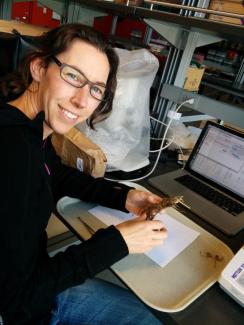
Title: Cross-boundary Planning for Resilience and Restoration of Endangered Oak Savannah and Coastal Douglas-fir Forest Ecosystems
Description: I built and applied species distribution models for bird and plant species of interest to conservation to facilitate MARXAN analyses. These MARXAN analyses will be used to prioritize land acquisition and conservation investment throughout terrestrial habitats of the Salish Sea - Georgia Basin region of WA and BC. I also assisted in the further development of an on-line MARXAN interface to assist managers in prioritizing conservation investment in the Canadian portion of the Salish Sea region.
Michael Scott, Royal Botanic Gardens, Kew, UK
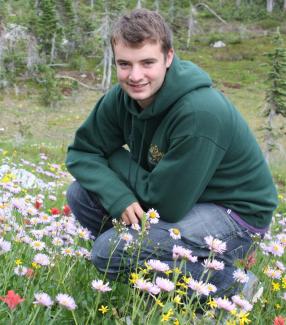
Title: Identifying Biodiversity Hotspots within a Biodiversity Hotspot: Madagascar
Description: Madagascar is a unique and globally important biodiversity hotspot and conservation priority. Effective conservation requires that the most diverse areas within Madagascar are identified. From field records and herbarium specimens, the Royal Botanic Gardens Kew (RBG Kew) holds large high quality datasets for Madagascan plants, including the precise location where these species were found. This data can be used in combination with bioclimatic data to infer the ranges of individual species. In this project I used this technique for many plant species to find which areas within Madagascar harbour the greatest plant diversity. These conservation priorities will be shared with the on-location Kew Madagascar Conservation Centre (KMCC).
2014 Interns
Alys Granados, Wildlife Conservation Society (WCS) Chile
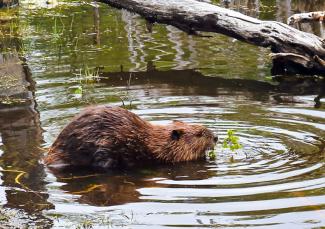
Title: Likelihood of invasion of North American beaver Castor canadensis
Description: Beavers are an introduced species in Tierra Del Fuego and their presence has resulted in much damage to the ecosystem and its native species. The eradication of this species is a major goal of WCS' ecological restoration work in this area but before this can be undertaken, a greater understanding of beaver ecology in Tierra del Fuego is required. I assessed factors impacting establishment of beaver colonies in Karukinka Reserve (Chile).
Andrew Huang, Environment Canada (Science and Technology Branch)

Title: Studying population health of three songbird species in the South Okanagan Wildlife Management Area of BC
Description: The Yellow-breasted Chat is federally listed as Threatened, but the wintering location of the Okanagan population is relatively unknown. Therefore, Environment Canada is using geolocator technology to track their stopover and wintering locations for conservation purposes. Environment Canada is also tracking the migratory route of the western populations of Veerys and Gray Catbirds to complement a study on the eastern populations. I used this data to investigate population sizes, migration patterns, and habitat usage of these songbirds.
Christopher Lee, Bioversity International
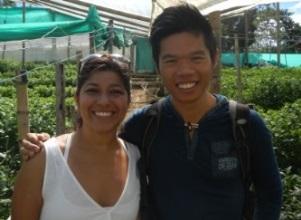
Title: Evaluating Pleistocene refuges as indicators of contemporary genetic diversity hotspots
Description: During previous ice ages, some areas remained unglaciated and allowed species to persist (refuges). Today, these refuges represent the oldest and potentially most genetically diverse portions of a species' present-day distribution. For my internship, I explored the relationship between genetic diversity in tree species and inferred distributions during the Pleistocene. By modeling these refuges we can develop a cost-effective methodology that helps conservation workers target areas where conservation and rehabilitation efforts will have the most impact. See: http://youtu.be/SEo7hQLjF4o
Kate McGrath, AQUASIS - Associacao de Pesquisa e Preservacao de Ecossistemas Aquaticos
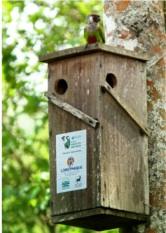
Title: Grey-breasted Parakeet Conservation Project
Description: The grey-breasted Parakeet (Pyrrhura griseipectus) is presently known from only two localities in North-East Brazil and is considered one of the two most critically endangered parakeet species in the world. Large-scale deforestation and illegal hunting have reduced the wild population to less than 300 individuals. Recent conservation efforts have led to successful habitat creation for this species and continued support of these efforts may play a significant role in restoring wild populations. During this internship, I monitored nest boxes and band birds to improve censusing of this endangered species.
Bernardo Ranieri, Stewardship Centre for British Columbia
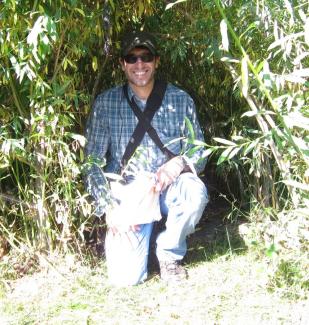
Title: Species at Risk Primer Stewardship Practices Implementation and Assessment Project
Description: Effective conservation requires community support to safeguard natural ecosystems and habitats for species at risk. I developed activities that will encourage people to become conservation stewards. I also addressed science gaps related to the effectiveness of different stewardship practices for riparian areas and agricultural waterways.
Richard Schuster, The Nature Trust of British Columbia
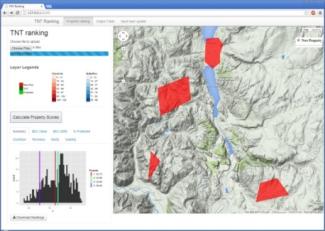
Title: Relative Ecological Assessment of Conservation Land in British Columbia
Description: I developed a software tool that allows The Nature Trust of British Columbia to more thoroughly and efficiently evaluate potential land purchases using scientific assessments, spatial data, and information about compatible or incompatible land uses. Developing a tool to evaluate potential conservation opportunities allows limited staff time and conservation funds to be focussed on properties that are most likely to contribute positively to the long-term persistence of ecologically significant species and communities. http://www.naturetrust.bc.ca/blog/?p=1562
Matthew Strimas-Mackey, Bioversity International
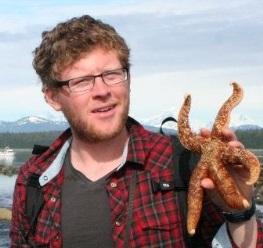
Title: Modelling the potential distribution of Tropical Dry Forest in Colombia under current and future climate conditions to inform future ecological restoration activities.
Description: I developed a comprehensive protocol for restoration of Tropical Dry Forest in Colombia, taking into account genetic and functional diversity, while anticipating the expected impacts of climate change. Tropical dry forests are one of Colombia's most threatened ecosystems. Modelling the distribution of tropical dry forest tree species under past, present, and future climates will inform forest restoration efforts by: (1) identifying hotspots of genetic diversity for the collection of seeds and (2) highlighting candidate areas for restoration that are likely to remain suitable into the future.
Allison Thompson, Canadian Parks and Wilderness Society - BC
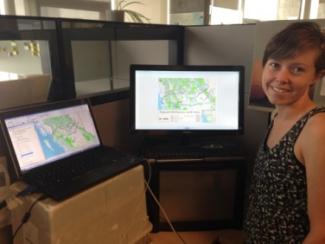
Title: Impact analysis of proposed pipelines in northern BC
Description: B.C.'s north is facing a number of rapidly emerging development pressures, but the conservation community is only beginning to understand how these pipelines and associated disturbances will affect B.C.'s parks, protected areas, and intact forest landscapes. I reviewed the proposed trajectory of LNG pipelines, and identifed possible impacts that should be considered, including landscape-level considerations (i.e., habitat fragmentation, wilderness and wildlife values), and how pipelines may affect management plans associated with affected protected areas.
I researched and reviewed government policies, pipeline proposals, and species at risk data in order to analyze the impacts of LNG development on B.C.'s northern landscape. A report summarizing and analyzing the impacts of pipelines on B.C.'s parks, protected areas, and intact forest landscapes was created for CPAWS.
Megan Vaughan, Tula Foundation
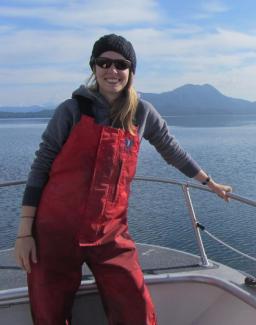
Title: Hakai Beach Institute Seagrass Monitoring.
Description: Seagrass meadows are critical coastal ecosystems that provide habitat for a range of associated species, buffer coastal margins from storm activity, and function in a range of ecosystem processes including carbon sequestration and nutrient cycling. However, these ecosystems are under threat from human disturbances, such as climate change and pollution. I studied the distribution and abundance of seagrass in the Hakai region of the Central Coast of BC and the effect of foraging by otters on the productivity and structure of seagrass communities.
2013 Interns
Danika Kleiber, Palau International Coral Reef Center
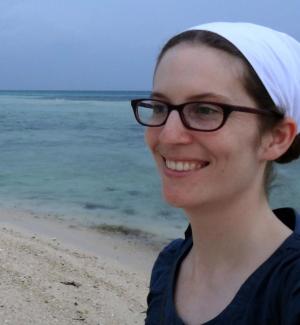
Title: Monitoring human well-being related to protected areas in Palauan communities
Description: Danika Kleiber joined the Palau International Coral Reef Center (PICRC) to assist with a research program to monitor human well-being related to protected areas in Palauan communities. PICRC has a strong research background in ecological monitoring, and brought Danika in to help realize an interdisciplinary research program by increasing social science research capacity. Danika collaborated with local research staff to translate identified indicators of well-being into surveys. When the surveys were completed Danika trained research staff in respondent selection and interviewing methods, and oversaw a pilot study in the Palauan state of Ngardmau. The results of the pilot study have been used to inform management priorities, and will also be used as a template for future social well being monitoring in Palau and throughout Micronesia as part of the Micronesian Challenge, a regional agreement to protect 30% of all near shore waters and 20% of all land by 2020.
Jamie Leathem, BC Ministry of Forests, Lands and Natural Resource Operations and Canadian Wildlife Service
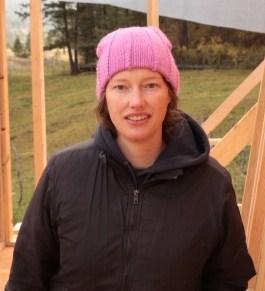
Title: Inventory and Monitoring of At-Risk Species in the Okanagan Region
Description: The Okanagan Valley is a hotspot of biodiversity, containing some of Canada’s most endangered ecosystems and highest proportions of species-at-risk (SAR). This internship involved multiple projects addressing plant and animal SAR in the region. Field projects included rare plant inventories of South Okanagan grasslands in conjunction with the BC Conservation Data Centre and BC Parks, small mammal trapping on BC Conservation Lands, and working with CWS to map new and old populations of Lewis’s Woodpecker (Red-Listed/Threatened in BC). Additionally, Jamie developed two publications. She designed a bird identification booklet for vineyard operators and orchardists who trap European starlings to prevent crop damage. The ID booklet will allow farmers to identify incidental species sometimes trapped along with the invasive starlings. Species information can be recorded, non-starling individuals released, and location information passed on to CWS. Jamie also helped develop and distribute a rare plant identification booklet for Okanagan naturalist groups.
Jessica Lu, Bioversity International and UBC Faculty of Law

Title: Crop Genomics Data Governance: Sharing Data and Intellectual Property
Description: This internship was a joint research project between Bioversity International and the Faculty of Law at the University of British Columbia, engaged in research regarding the policies and practices of agricultural genomics researchers on sharing and curating genomics data. The field of genomics research encourages active data sharing, yet in practice, a lack of standardization is problematic. Research primarily focused on the genomic activities of research centres in the Consultative Group on International Agricultural Research (CGIAR), 16 centres across the world, although broader contexts were also investigated. Tasks included speaking and consulting with various genomic scientists, as well as formulating a survey to gather information on data practices. The main output is a literature review, summarizing challenges in sharing data, as well as a history of genomics and biotechnology in the CGIAR network.
Manon Picard, Secretariat of the Convention on Biological Diversity (SCBD), United Nations Environment Programme (UNEP)
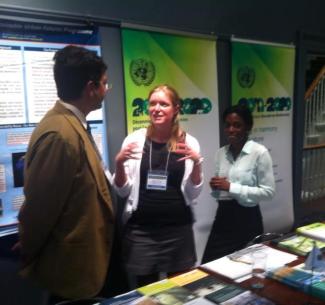
Title: Updating biodiversity country profiles
Description: Biodiversity has tremendous value that is widely recognised. By ratifying the Convention of Biological Diversity, most of the countries have agreed to make effort to preserve it and equally share its benefits. The Secretariat has been formed to help the parties reach their targets and properly report actions taken in order to manage those efforts and teach other parties. As a BRITE intern, Manon Picard has worked as part of a team in updating country profiles by summarizing the national reports and other relevant sources of information. This work is ongoing and will require further revisions and countries’ approval before being uploaded to http://www.cbd.int/countries/. In addition, Manon worked on a research compilation about Marine Protected Areas (MPAs) guidelines, effectiveness measures, definitions and applications. To promote SCBD’s work, Manon participated in the organization of an international conference about urban biodiversity in Montreal (Urban biodiversity – A value to appreciate).
2012 Interns
Louise Blight, World Wildlife Fund Canada
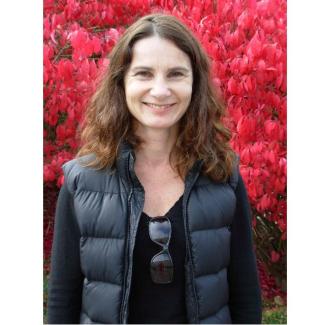
Title: Effects of chronic underwater noise
Description: The objective of this project was to carry out a literature review of what is known about the effects of chronic underwater noise (e.g., that generated by vessel operations) on whales, dolphins and porpoises, particularly relating to cetacean species-at-risk in Pacific Canada. Some management recommendations were developed based on the Canadian policy context, for example derived from the Species at Risk Act (SARA) This information was summarised into a draft report and/or manuscript for publication in an appropriate policy journal, e.g., Marine Policy.
Edward Gregr, West Coast Aquatic
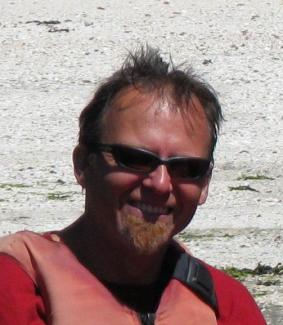
Title: A comprehensive map of marine bottom type for West Coast Aquatic to support Marine Spatial Planning
Description: This project combined available bottom type data into a continuous spatial coverage of the nearshore region. An important marine ecosystem, the nearshore is poorly studied, mainly because it is difficult to access. Based on methods developed in an earlier collaboration with DFO, bottom samples from a variety of sources were collected for Barkley and Clayoquot Sounds, West Coast Vancouver Island, and Theissen polygons were used to extrapolate bottom type across the nearshore (0 - 50 m depth). The Province of British Columbia's ShoreZone data set, which comprehensively covers the shoreline, was also integrated into the analysis. The result is a continuous map of Bottom Patches - polygons describing bottom type - defined with the best available information. The map is intended as a spatial framework to support an ecosystem approach to management of the nearshore ecosystem. The method is currently being re-applied to the entire west coast of Vancouver Island.
James Hehre, World Wildlife Fund - Latin America and Caribbean Solutions Programme
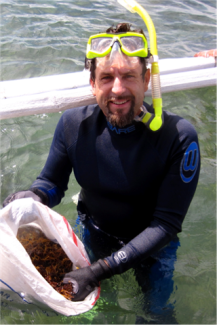
Title: Development of best practices in mangrove conservation and restoration for climate change adaptation
Description: The objective of this project was to identify best practices in mangrove conservation and restoration for climate change adaptation. The WWF-LAC, as part of its climate change and ecosystem restoration initiative in Latin America and the Caribbean was seeking to identify best practices for mangrove restoration. The increased recognition of the importance of mangrove ecosystems; as part of mangrove-seagrass-coral interdependent systems, nurseries for fisheries, and coastal protection has led to a dramatic increase in restoration efforts. As interest in mangrove restoration as a climate adaptation strategy accelerates, the need to employ best practices is urgent. Despite the profusion of projects, critical analysis of past and ongoing restoration efforts is lacking. As projects progress from planning to real action, new knowledge and experiences are developed which are invaluable in informing similar actions elsewhere. There is an urgent need to recover and communicate these experiences and develop best practices.
Jamie Leathem, Yukon Conservation Data Centre, Dept. Environment, Yukon Government

Title: Moss and Lichen Inventory in Yukon Territory
Description: The Yukon Conservation Data Centre is part of a network of international data centres coordinated by NatureServe International. It is responsible for the collection, maintenance and distribution of data on plants, animals and ecological communities of conservation concern in Yukon. Accurate and continually-updated information is essential in identifying and monitoring at-risk species. Yukon’s flora is relatively under-studied compared to the rest of Canada and no comprehensive list of the mosses and lichens in the territory previously existed. The internship involved creating this list, beginning with an extensive literature search through floras, checklists and primary collection literature. Jamie worked closely with experts who solved taxonomic problems and assigned conservation ranks to each species. These up-to-date data are now being shared with NatureServe and will inform the Wild Species General Status Report, a Canada-wide record of species conservation ranks. Knowing which species occur in Yukon also helps to identify knowledge gaps, so future botanical exploration can target areas lacking information. With the recent boom in mineral exploration in Yukon, it is important to establish baseline data now in order to assess the status of these slow-to-recover organisms into the future.
Jennifer Meldrumm, Bioversity International

Title: Strengthening the maintenance and use of agrobiodiversity by indigenous and traditional agricultural communities for climate change adaption
Description: Major Activity: Analysis of results obtained from a three year project carried out in Bolivia and Malaysia with the goal of developing a framework for building ecological resilience into indigenous farming systems.
I completed a BRITE internship at Bioversity International on a project concerning indigenous farming communities and climate change. The project centered around maintaining and enhancing crop and varietal diversity to increase resilience to environmental perturbation, while respecting traditional values and practices. My work involved summarizing activities undertaken by my supervisor, Paul Bordoni, with indigenous communities in Malaysia and Bolivia over the last three years to draft up a final project report for the donor agency. This task involved assessing what information was present and what needed to be done to ensure the project objectives were met. I also performed baseline diversity assesments for crop diversity at household and community scales using survey data. Based on project outcomes in both locations, I devised a general framework for building ecological resilience into indigenous farming systems. I presented the results of the project and the framework in a seminar at Bioversity
Jocelyn Nelson, Canadian Parks and Wilderness Society
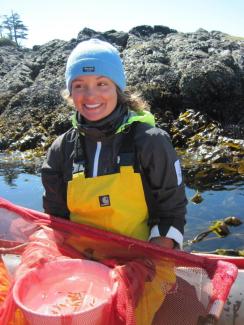
Title: World Heritage Site tentative list nomination preparation for the glass sponge reefs in the Queen Charlotte Basin
Description: The glass sponge reefs of the Queen Charlotte Basin were first discovered in 1987 by the Geological Survey of Canada, and have since been recognized as the only close modern analogue to the largest bio-construction ever on earth: the ancient reefs of the late Jurassic that were thought to have gone extinct 200 million years ago. This makes the glass sponge reefs a great candidate for a World Heritage site, which is defined as sites that are of outstanding universal value based on criteria developed by the United Nations Educational, Scientific and Cultural Organization (UNESCO). Inscription on the World Heritage List increases awareness of the site, is a source of pride, and can result in financial assistance. Jocelyn worked with CPAWS to create a World Heritage tentative list nomination package, and created a database of information from primary literature to use for future public outreach and education.
Manon Picard, Canadian Parks and Wilderness Society- British Columbia Chapter (CPAWS-BC)
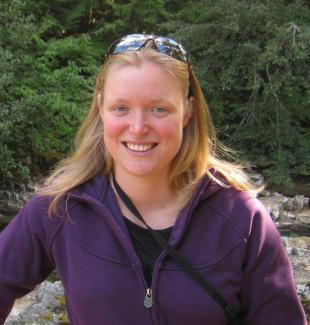
Title: Economic benefits of conservation report
Description: British Columbia wilderness has a remarkable value. CPAWS-BC, acknowledging this fact, has been involved with protecting deserving areas. However the increasing needs of increasing human population is making their goal more difficult to attain. Misconceptions and misuse of economics can lead to depletion of valuable natural resources or destruction of wild habitat. Understanding economics is complex but crucial to ensure that present monetary gains from resource exploitation do not impede BC’s economic future. As a BRITE intern, Manon Picard has written a report exploring the economic arguments commonly used to exploit natural resources. By understanding better the arguments used to exploit a resource, CPAWS-BC will be better enabled to rebut those arguments when appropriate and propose conservation of a resource or a habitat as a more economically viable solution for British Columbia.
Mattew Siegle, Parks Canada

Title: Weight-length relationship (WLR) of fishes utilizing eelgrass
Description: Eelgrass (Zostera marina) meadows are an incredibly productive ecosystem in the coastal waters of British Columbia, supporting a high diversity of fishes. Despite this, basic information about the fish assemblages is lacking. Matthew’s project utilized data originating from Park Canada’s long-term eelgrass monitoring survey to accomplish two goals: (1) characterize the weight-length relationship (WLR) of fishes utilizing eelgrass, and (2) use the WLRs to calculate ‘body condition’, a measure used to assess relative fish health, and address if potential variation in body condition is explained by oceanographic or environmental variation. The results of this project will be used to facilitate research into eelgrass fish assemblages and assess how oceanographic and environmental variation underscores habitat quality.
2011 Interns
Jenn Burt, Georgia Strait Alliance (GSA)
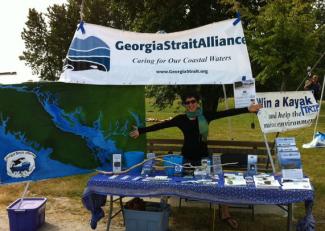
Title: Community Map Marine Ecology Reseacher
Description: In 2010, the Georgia Strait Alliance (GSA) launched an on-line community map project. This consisted of an on-line map (much like a Google Map) where spatial information relating to ecological features, environmental issues, green businesses, and areas of community or conservation interest could be navigated to provide the user with information and relevant website links. The internship first involved an external review of the map, providing feedback in a report on its current structure, content, layout…etc. Second, the intern helped collect and build the ecological content for the map; an area identified as weak by the mapping coordinator. This involved networking with various coordinators from other BC mapping initiatives as well as other NGO organizations to obtain spatial data for relevant ecological features within Georgia Strait (e.g. marine mammal habitat, important bird areas, marine flora…etc). Along obtaining and processing the spatial data, the intern helped to write the web content pages associated with each ecological feature. As a result of the internship, the GSA is currently revising its initial map structure and working with the suggested new layout to provide a more scientifically accurate, conservation relevant and user friendly map.
Peter de Koning, High Country Consulting Ltd
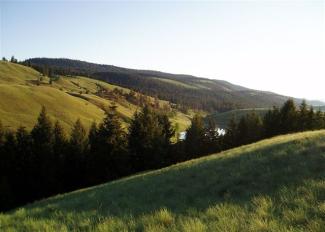
Title: GIS analyst/field technician
Description: Over the course of 4 months, Peter deKoning worked on a project trying to understand how different land management approaches affect carbon sequestration in the Thompson-Nicola region of BC’s interior. By better understanding how carbon sequestration is affected by land management in a changing climate, we can look for opportunities to mitigate climate change, conserve rare grassland ecosystems, and create alternative revenue sources for the ranchers who maintain and manage them. Over the course of his internship, Peter had the opportunity to quantify and map carbon storage potential in grasslands using GIS and InVEST in order to evaluate the economic potential of different land management scenarios. Not all his time was spent in the office though – he also had the opportunity explore the grasslands while trapping small mammals in Lac-du-Bois Provincial Park. This work was the beginning of a multi-year project and is still on-going.
Robin LeCraw, The David Suzuki Foundation
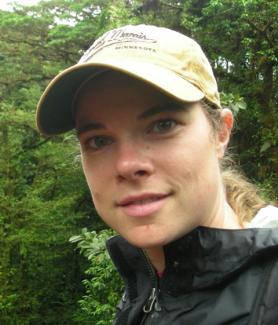
Title: Species and Ecosystems conservation report
Description: BC has the highest diversity of species in Canada, but is one of the few jurisdictions in North America without a law to protect the huge number of species-at-risk. In answer to the call to improve protection for BC’s species, a task force for the BC government recommends an “ecosystem approach” to species-at-risk protection, but what is that? This report by the David Suzuki Foundation and Ecojustice discusses why ecosystems need to be considered to protect species, and lays out the most scientifically defensible method of how to implement an “ecosystem approach”. The 2 month internship at the David Suzuki Foundation office in Vancouver involved research of the literature, contacting independent conservation groups, and facilitating a workshop at UBC to bring scientific experts together to inform this report which will be made available to the public and policy makers alike.
Kerrie O'Donnell, Ecotrust Canada

Title: Sustainable Fisheries Research
Description: I worked primarily on a project call the Fishery Diversification Model – which is a decision-support tool for planning resilient fisheries in B. C. Fishing communities in B. C. are at risk of dying out due to an array of interconnected challenges including declines in fish populations, poor market prices, loss of access to fish and high entry prices. Recognizing this, Ecotrust Canada has designed a new tool to help fishing communities figure out how to bounce back. The tool enables communities to design multi-species fisheries that work better for their cultures, economic needs, interests and the health of their resources. I worked on many aspects of this project. I provided advice on model and database design and analyzed B.C. commercial fishery catch data. One of my main contributions was to re-design, conduct, enter and analyze interviews with B.C. commercial fishermen about fishing expenses. Finally, I spear-headed writing a grant proposal to continue this work - http://www.rareplanet.org/en/solution-search-entry/decision-support-too… .
This internship subsequently led to a position with Ecotrust Canada.
Leithen M'Gonigle, Xerces Society

Title: A plant selection tool to aid in the restoration of habitat for native pollinators.
Description: With honeybee populations declining worldwide, farmers are becoming increasingly dependent on alternative sources of pollination services. Native bees are the best alternative to honeybees. However, native bee populations in agricultural landscapes are also in decline due, in part, to a lack of suitable habitat. In an attempt to restore native bee populations, one practice that is becoming more common, is the restoration of native plant hedgerows along farm edges. These strips of plants aim to provide native pollinators with a constant source of floral resources over their flight seasons and, additionally, a refuge from herbicides/pesticides. With a reasonably large number of potential floral species, choosing an optimal selection of plants to be used in any given restoration can be challenging. To date, there are no computational tools available to aid in this process. As a BRITE intern, Leithen developed a tool that, given a set of plants and pollinators, finds the plant collection that maximizes some user-specified criteria (e.g., pollinator abundance, richness, or temporal constancy). In addition, Leithen tested this tool on empirical datasets and compared it to those plant collections previously chosen using expert opinion.
2010 Interns
Iain Caldwell, Canadian Parks and Wilderness Society (CPAWS)

Title: Science for the Southern Strait of Georgia
Description: As an intern for British Columbia's Chapter of the Canadian Parks and Wilderness Society (CPAWS-BC), I worked on their efforts to expedite creation of a National Marine Conservation Area (NMCA) in the Southern Strait of Georgia. Parks Canada initiated a feasibility study for an NMCA between the city of Vancouver and Vancouver Island more than ten years ago. CPAWS-BC wants to ensure the public is aware of the importance of protecting the area as soon as possible. I supported this effort by compiling and updating information on the ecology of the Southern Strait of Georgia. I summarized this information for use in public communication materials and created maps to illustrate the location and size of the proposed NMCA. Hopefully, through my internship work, the efforts of CPAWS-BC and others will be successful in protecting the Southern Strait of Georgia with an NMCA.
Bridget Conneely, World Wildlife Fund (WWF)
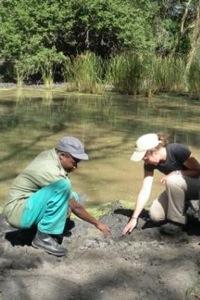
Title: Avoided Sedimentation as an Ecosystem Service in Gorongosa National Park, Mozambique
Description: The InVest tool was created by the Natural Capital Project, which is a joint effort between Stanford University's Woods Institute, University of Minnesota's Institute on the Environment, The Nature Conservancy, and World Wildlife Fund to provide tools for quantifying natural capital for decision-making. I participated in a program with the World Wildlife Fund to test the InVest tool using real data that I collected from Gorongosa National Park in Mozambique. I used the avoided reservoir sedimentation model of the InVest tool to estimate the monetary value of the sediment retention capability of the landscape under present and future land use scenarios. While my primary goal was to test the usability of the InVest tool, the results of the analysis are useful to Gorongosa National Park managers for conservation decisions related to accelerating sedimentation in the park's waterways. The internship resulted in an internal WWF report entitled "Avoided Sedimentation as an Ecosystem Service in Gorongosa National Park, Mozambique".
Hannes Dempewolf, United Nations Food and Agricultural Organization (FAO), Rome, Italy

Title: Project development internship at the Global Crop Diversity Trust
Description: The internship focused on the development of a project proposal on the conservation of crop wild relatives and their use for breeding efforts in the context of adapting global food security crops to climate change. I was part of a small and dynamic team of scientists that worked to establish the basis of a proposal, which a few months later was to be funded through a large grant from the Norwegian government to implement the 10-year project.
This internship subsequently led to a position with the Global Crop Diversity Trust.
Maria Espinosa-Romero, Living Oceans Society (LOS), Sointula BC
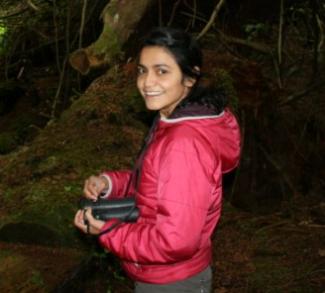
Title: Assessment of the "EBM readiness" of current fisheries management in the Pacific region
Description: My internship at LOS involved the review of international agreements, marine policies and management plans to evaluate the capacity of fisheries management in the Canadian Pacific region to implement ecosystem based management (EBM). This work was part of an LOS sustainable fisheries campaign and their EBM initiative. I presented the results of my analysis at the conference "Ecosystems 2010: Global Progress on Ecosystem based Fisheries Management", where representatives from 19 countries from a variety of governments, environmental organizations, and research institutions presented their efforts towards the implementation of EBM.
Tanis Gieselman, Royal Botanical Gardens, Kew at Wakehurst Place, West Sussex, England
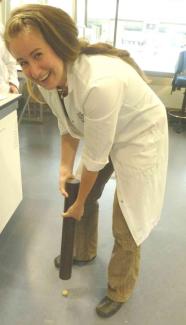
Title: Seed Conservation Intern for the Millennium Seed Bank Project
Description: The Millennium Seed Bank Project is dedicated to conserving the world's plant species. They share information, equipment, and seeds with partner organizations and have already banked seeds from 10% of plant species in cold storage, focusing first on endangered, endemic, and economically important plant species. My research at the Millennium Seed Bank was primarily focused on learning the theory and techniques for collecting, processing and storing seeds for ex situ conservation, which will be invaluable in my future endeavors to create a seed bank and conservation program in my home region. However, I also contributed to some of the research projects underway at the seed bank. I collected data and planted seeds for on-site grassland restoration experiments, and investigated the predictive power of a computer program which uses climate data to estimate optimum germination temperatures. I also worked on compiling a list of all of the food plants of the world to assist in prioritization of future species acquisitions into seed banks.
Robin LeCraw, BC Ministry of Environment

Title: Species at risk research prioritization framework
Description: The Ministry of the Environment has collected a great deal of information on all of the species identified “at risk” in British Columbia (BC Conservation Data Center). Included in reports from various agencies are recommendations for empirical research that is needed to improve conservation plans. This internship involved extracting information on research needs from a wide variety of reports (including COSEWIC reports and BC Recovery Plans) and summarizing them in a searchable central database. This allowed the intern and Ministry team leaders to develop a prioritization framework, which will form the basis of a 10-year research plan in the province. The tools developed during the internship will greatly improve the efficacy of conservation planning for species at risk in BC.
Karen Magnuson-Ford, Canadian Parks and Wilderness Society (CPAWS)
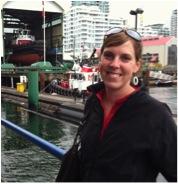
Title: What gets protected? Working with the Canadian Parks and Wilderness Society to establish a National Marine Conservation Area off the west coast of Vancouver Island.
Description: Off the west coast of Vancouver Island exists a vast diversity of marine species ranging from the blue whale to endangered salmon populations to more than one hundred species of sea worms. To protect this array of species and ecosystem diversity, CPAWS is working to establish a National Marine Conservation Area (NMCA) in this region. During my internship, I helped put together the initial document required by Parks Canada outlining the major physical, biological, cultural features of the west coast of Vancouver Island. I researched and wrote brief descriptions of the biology, location and conservation status of key marine fish, corals and sponges in this area. I joined these descriptions with the work of others into a single document and identified data sources for those sections that were still incomplete. I also researched marine conservation projects around the world to find out what methods are currently being used to ensure that the area that gets protected is truly representative of the larger region.
